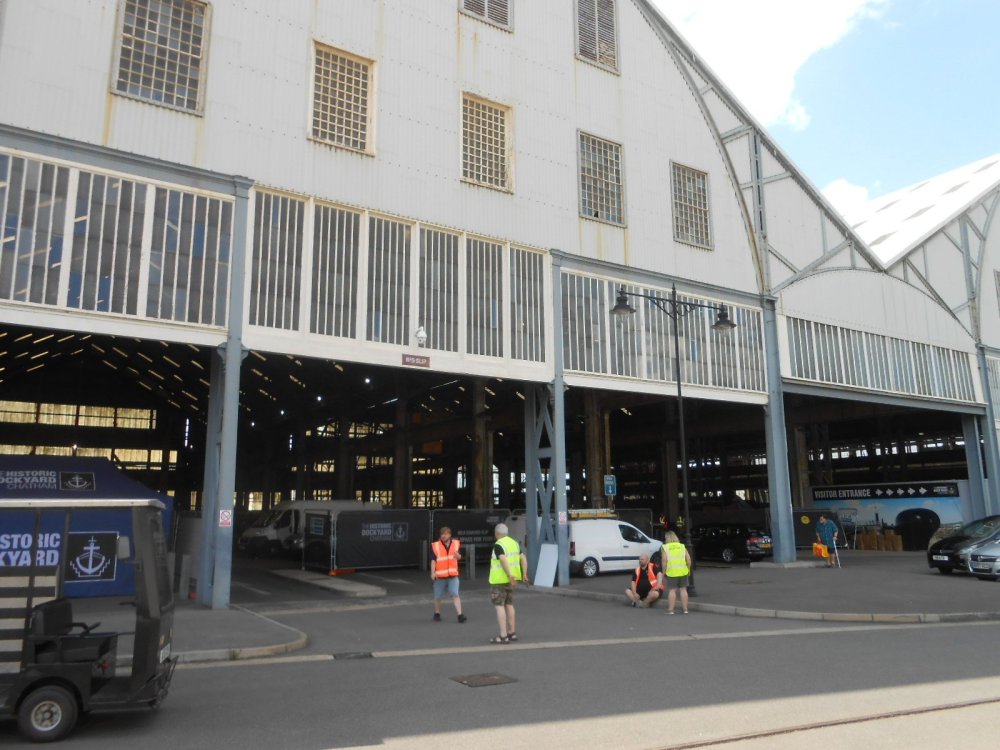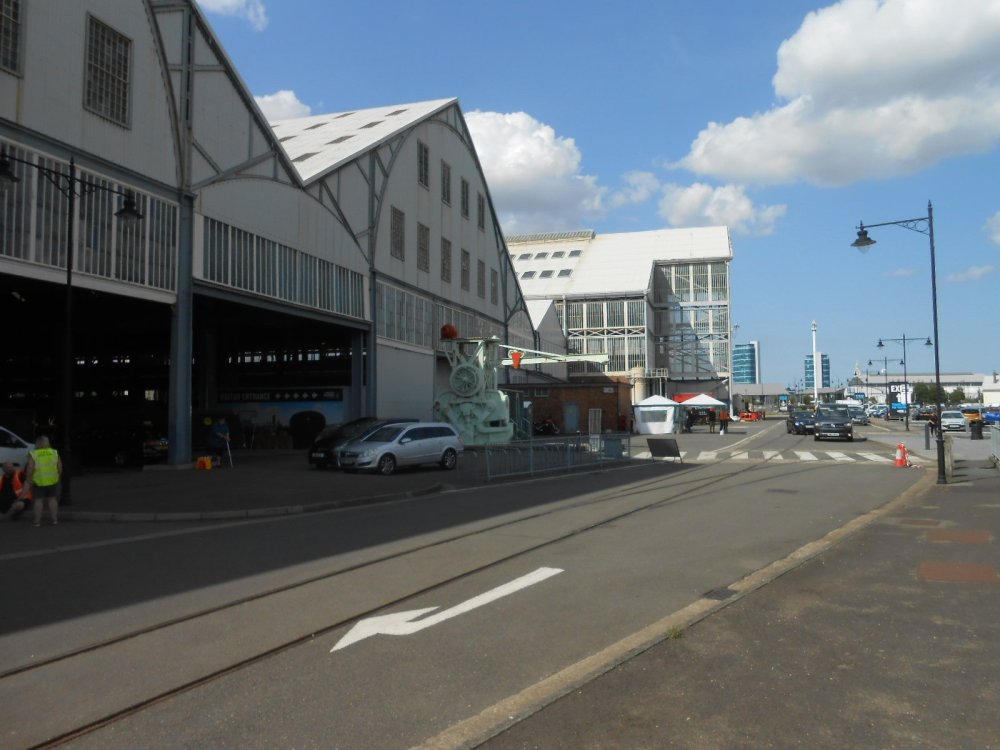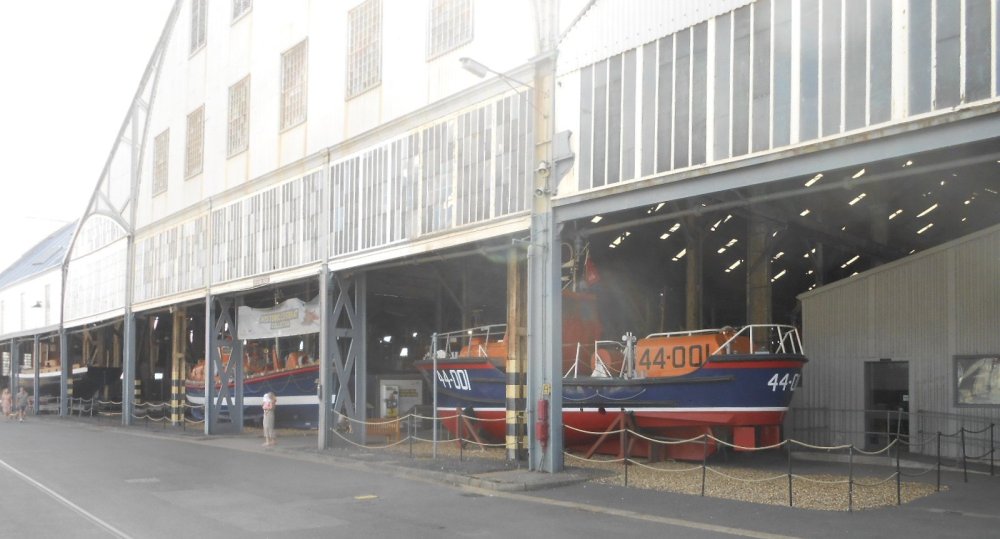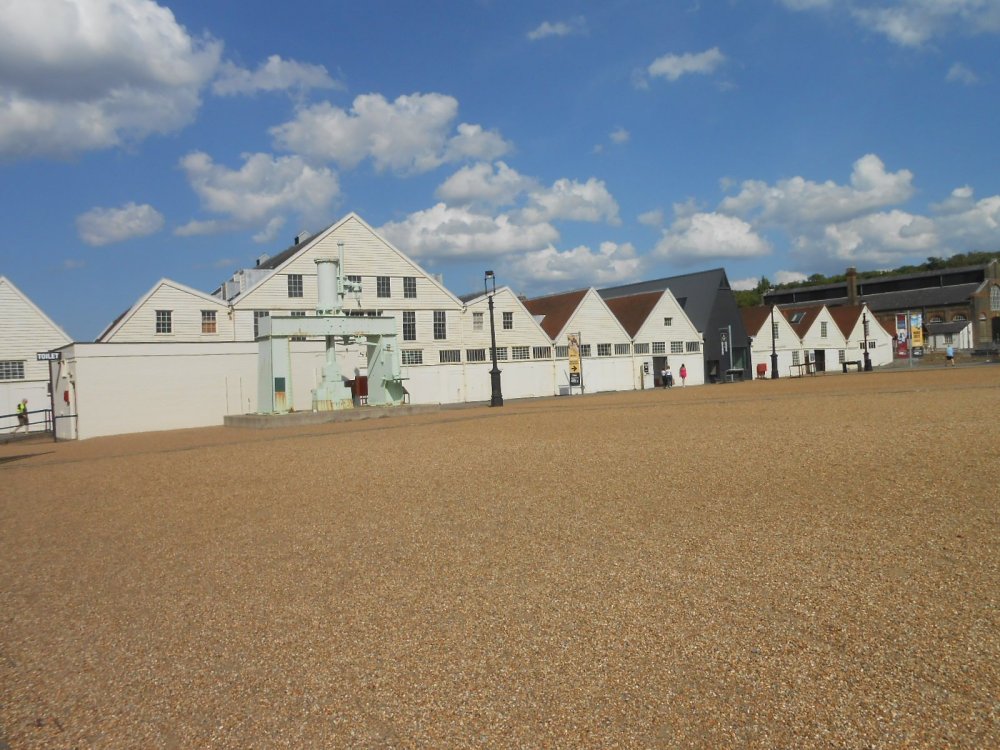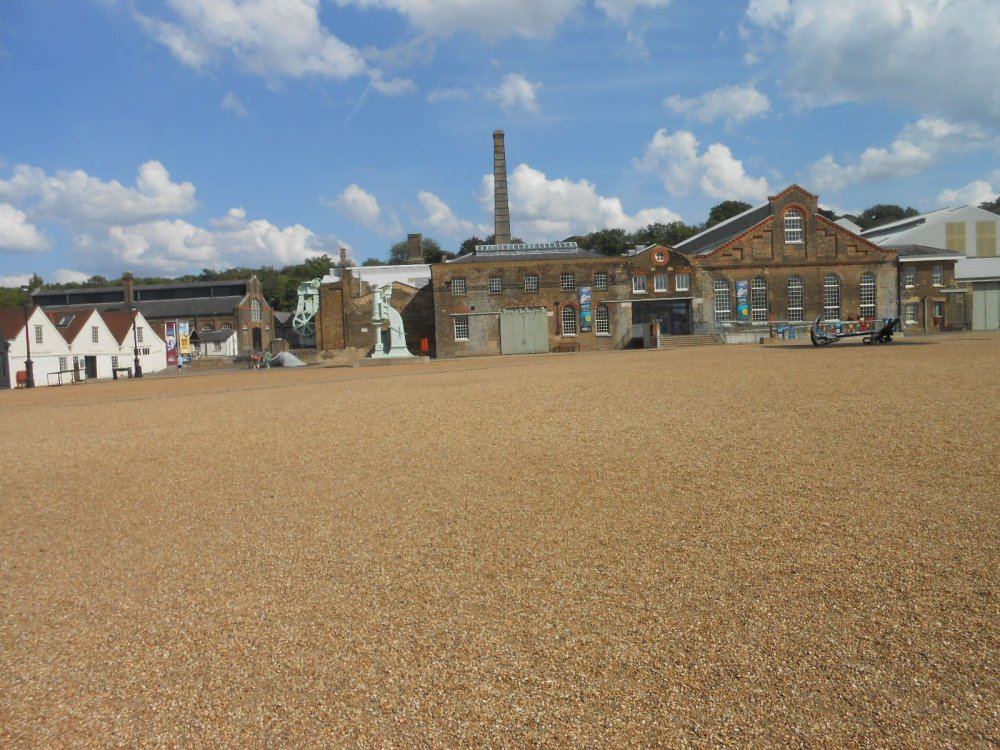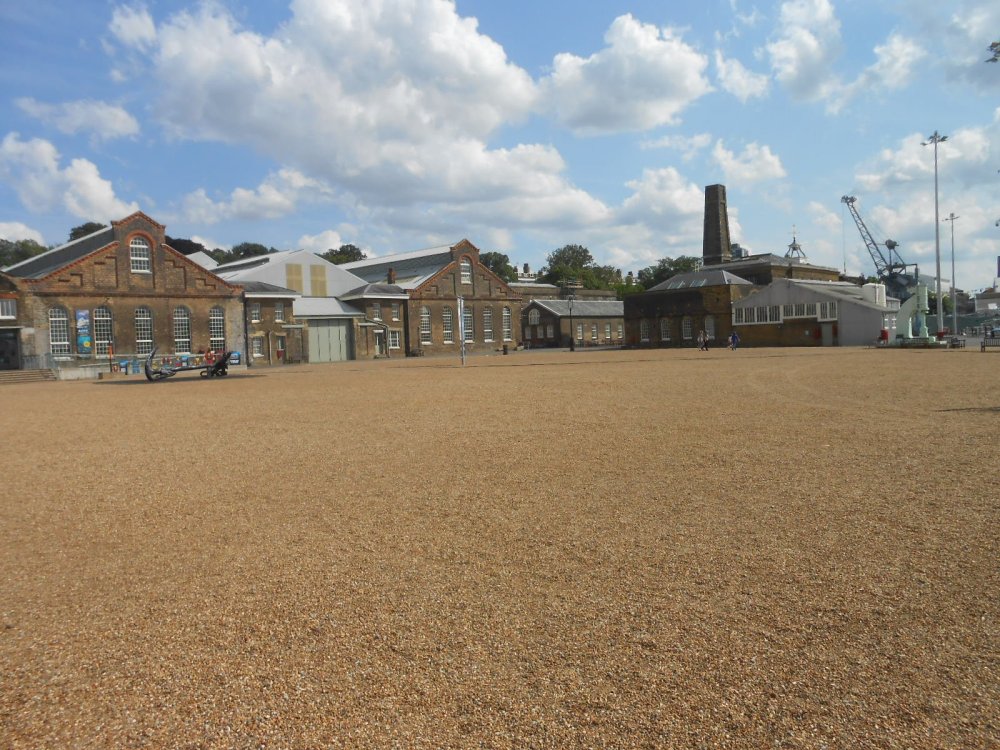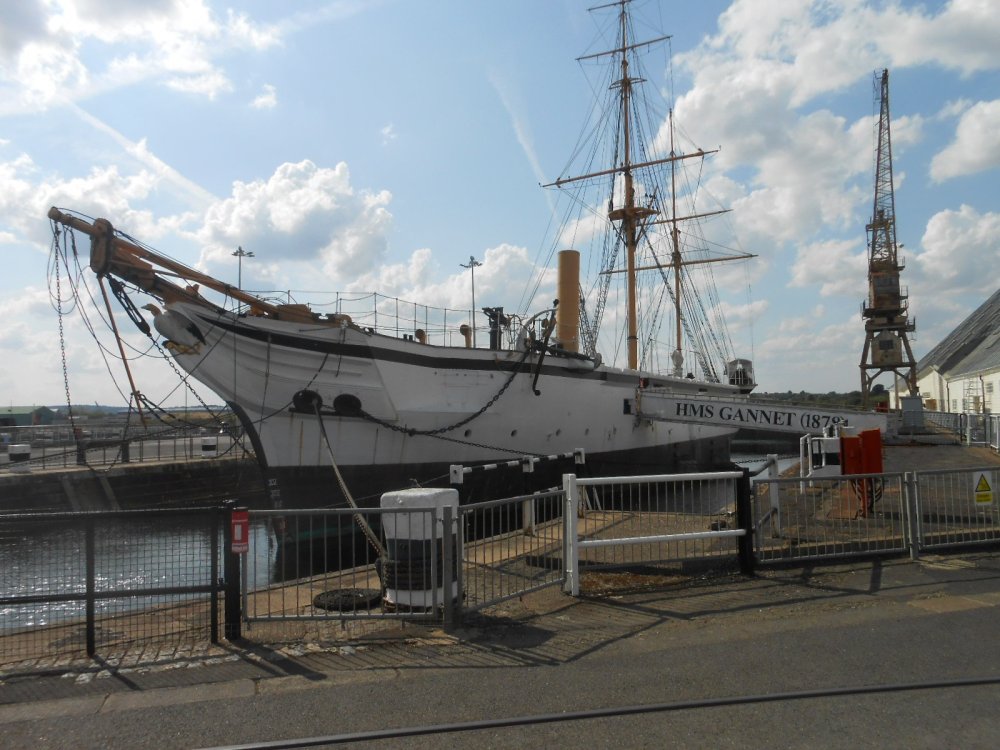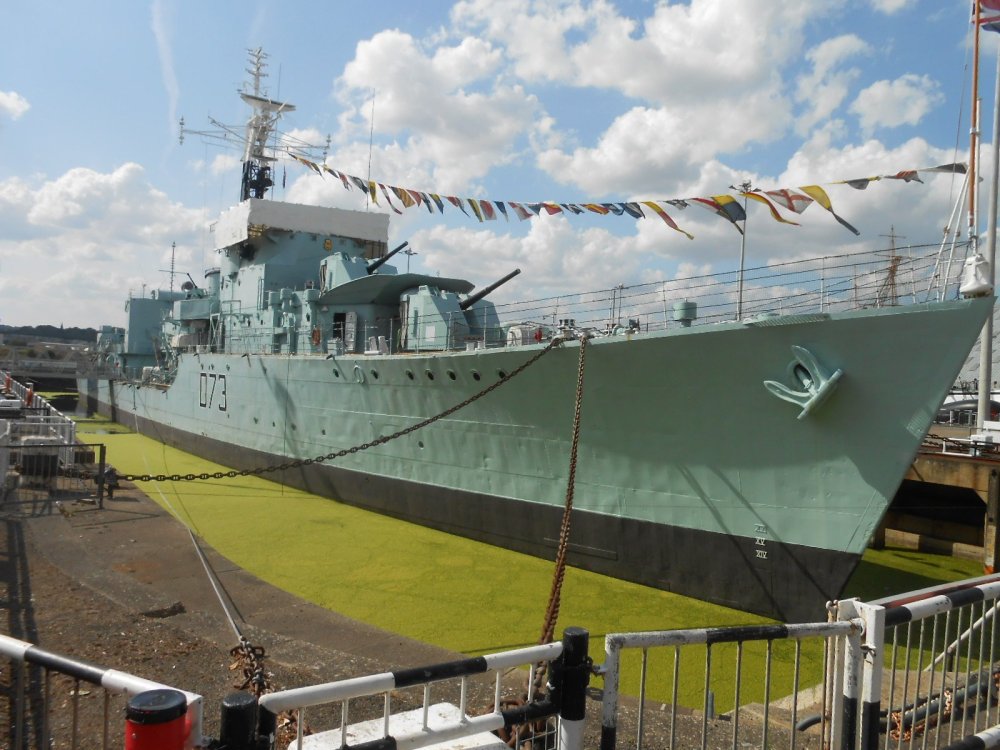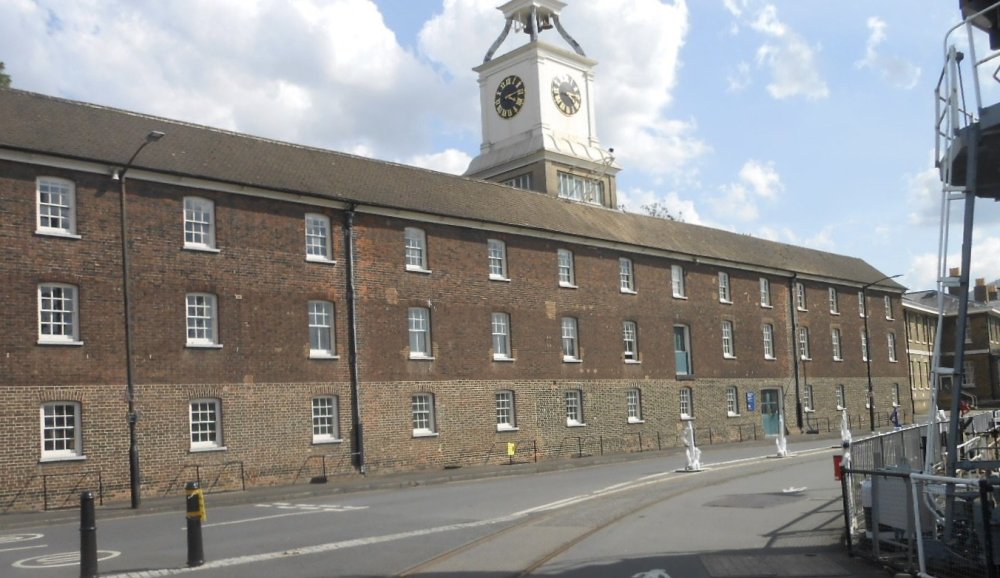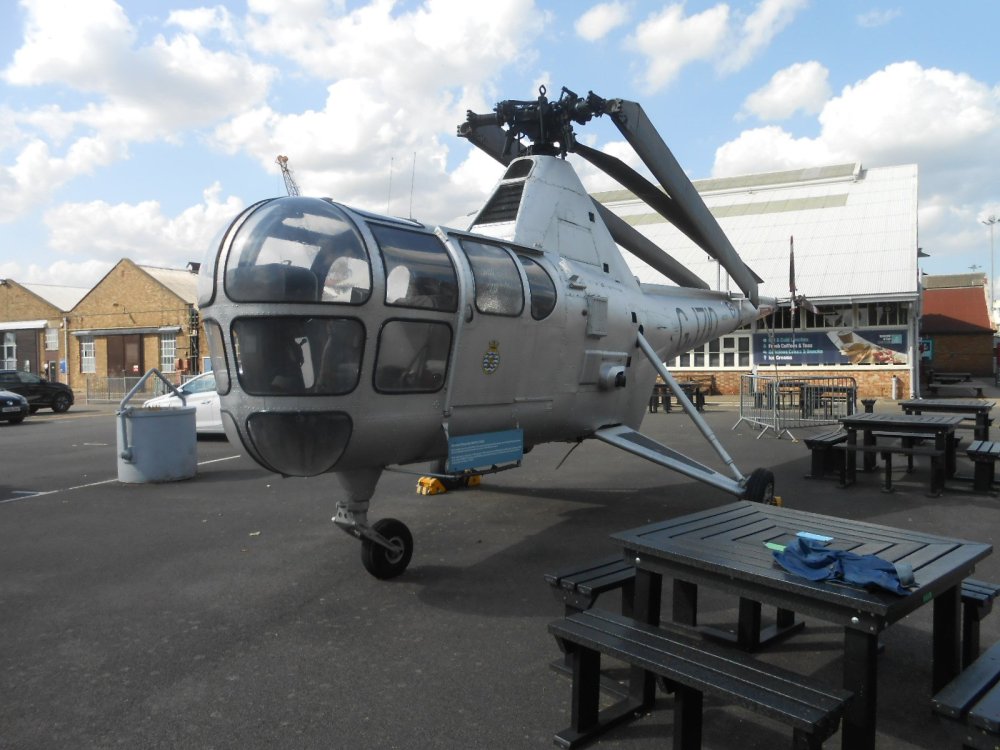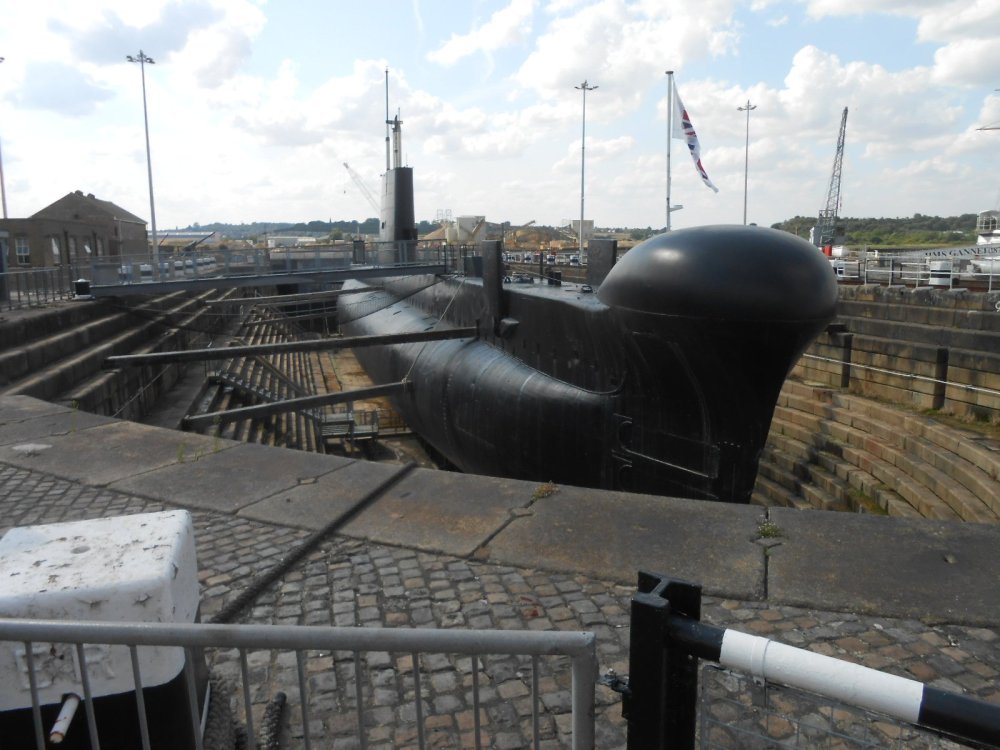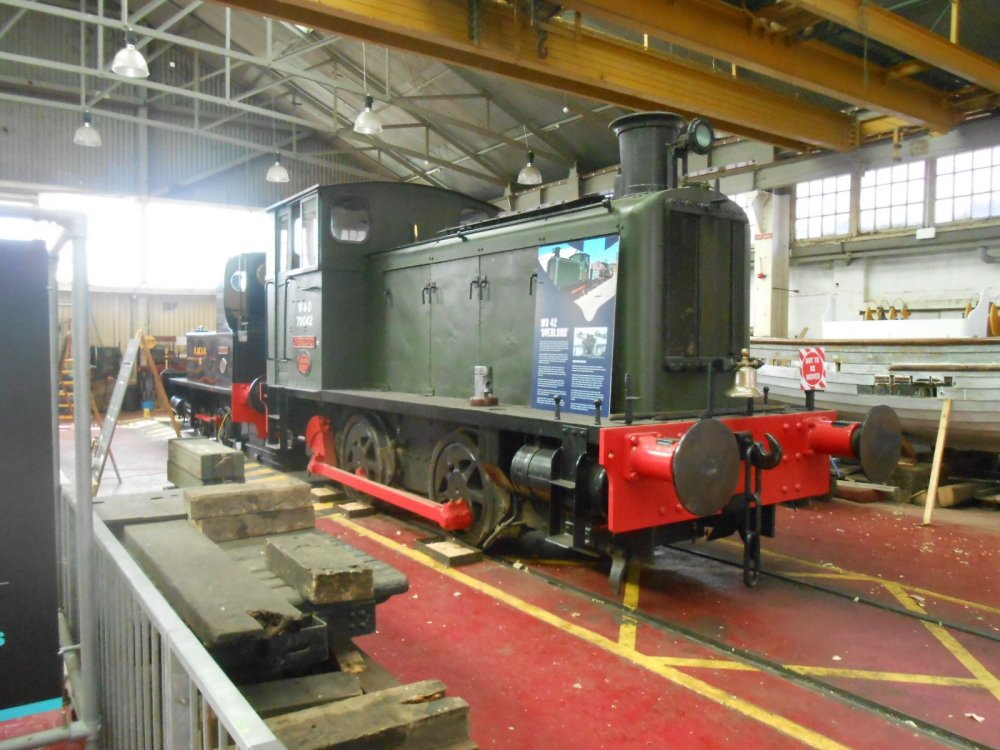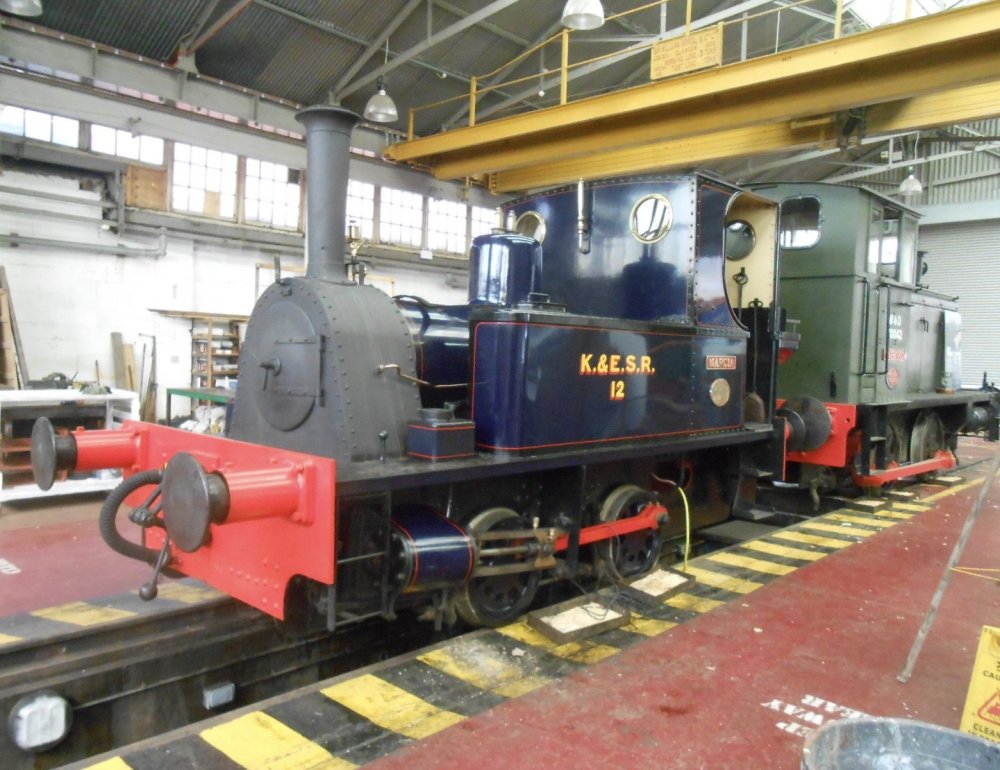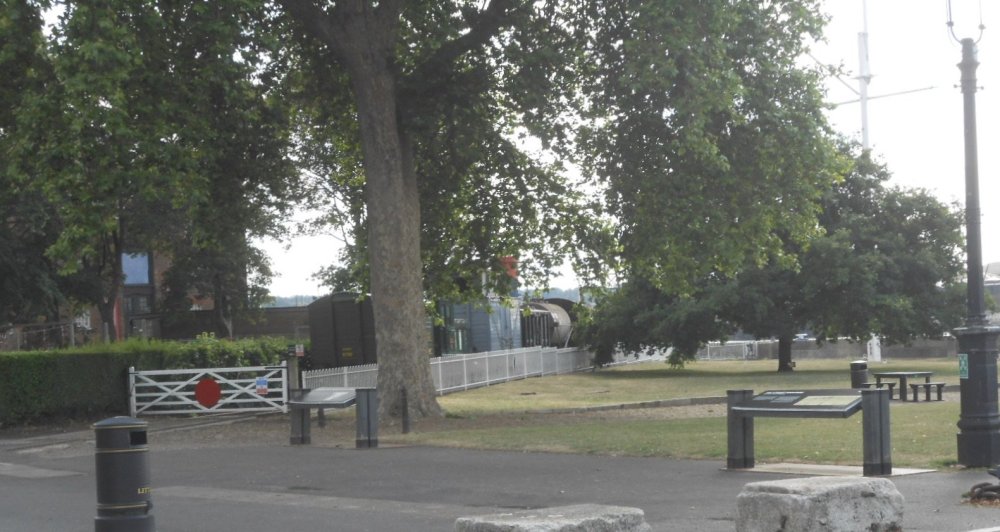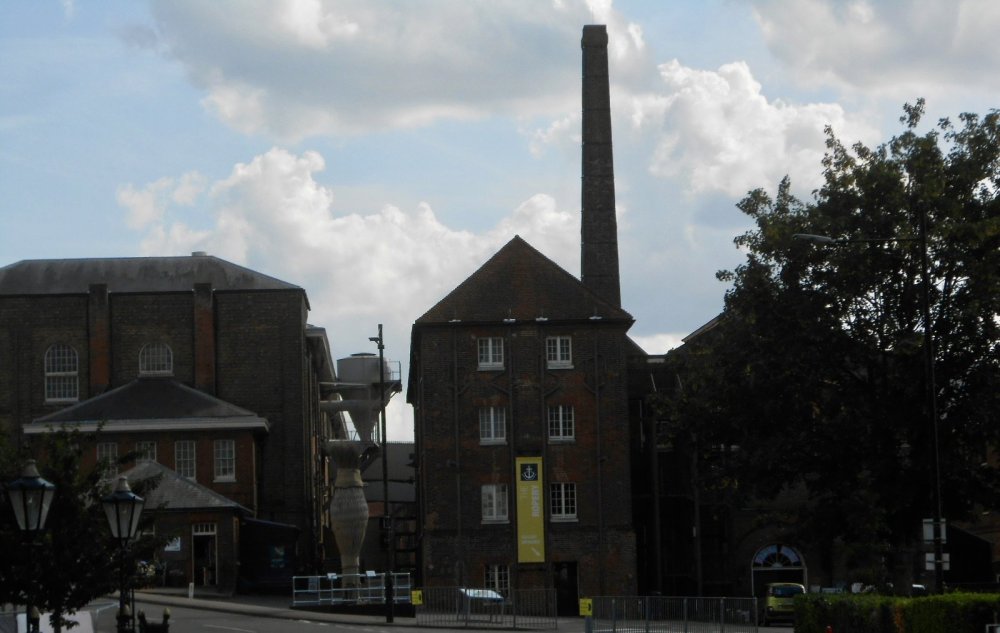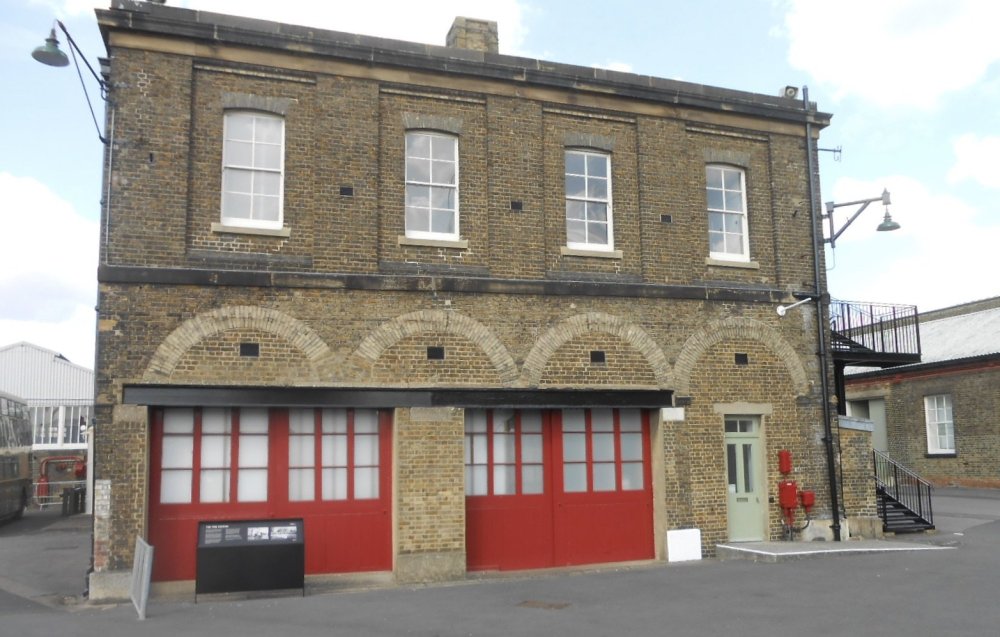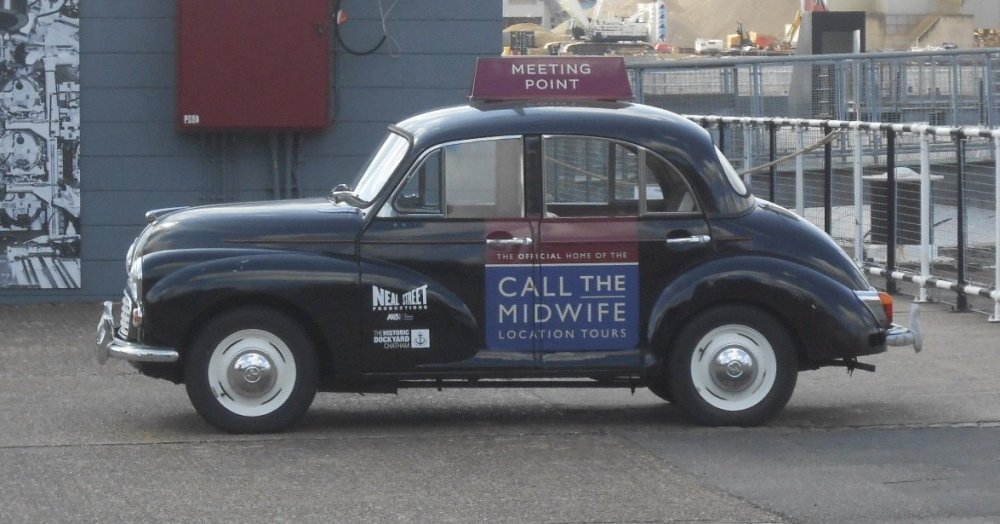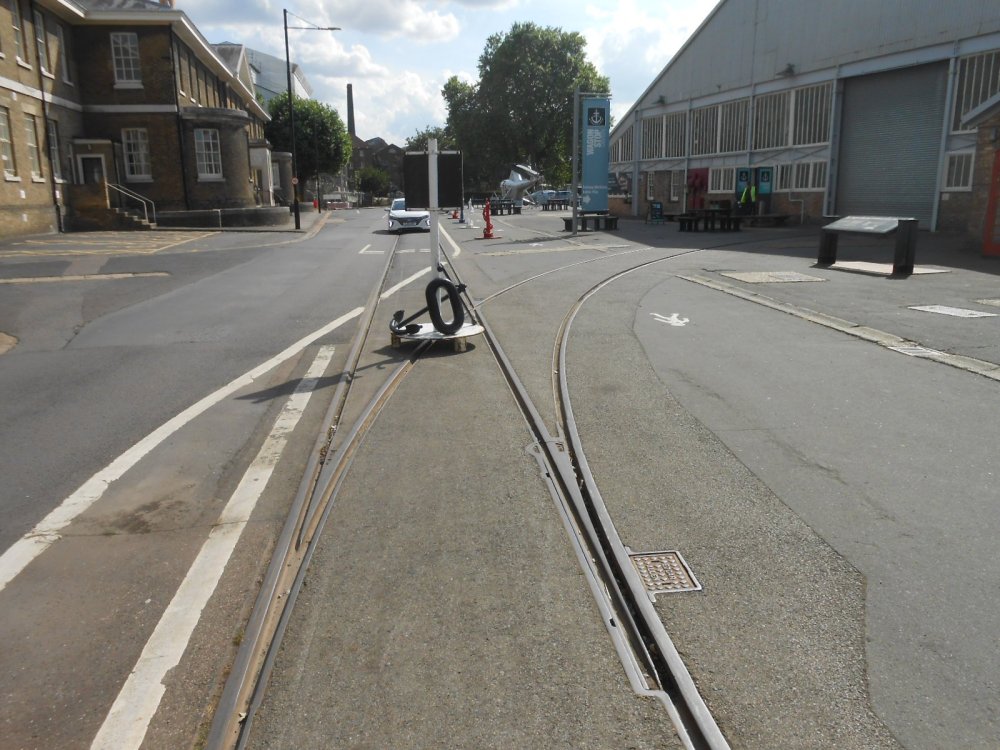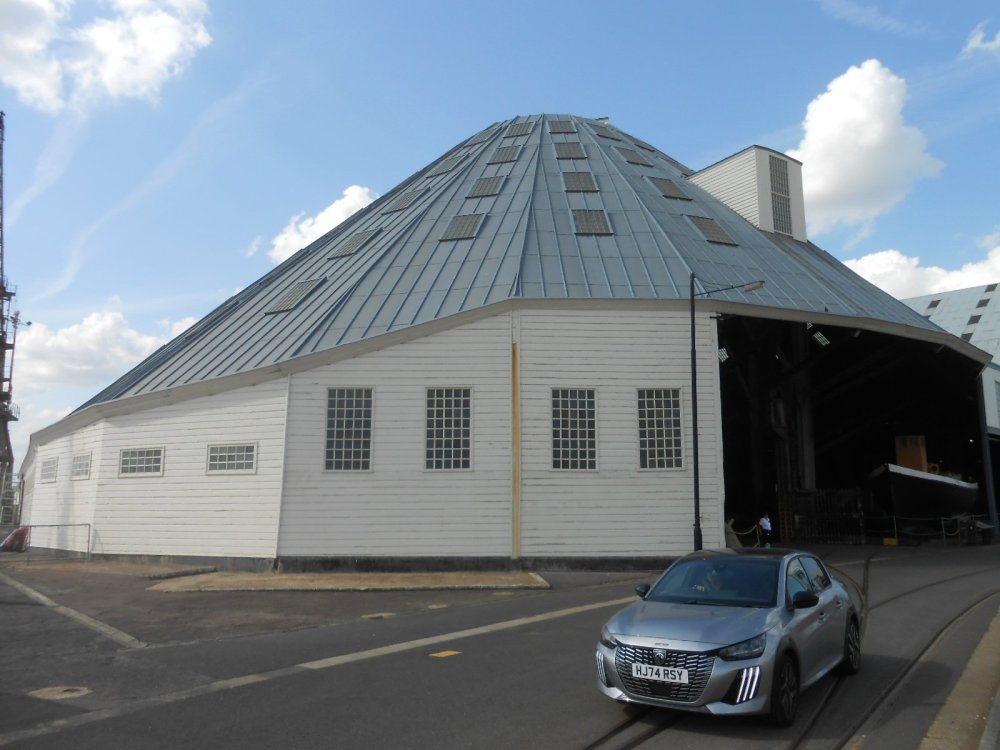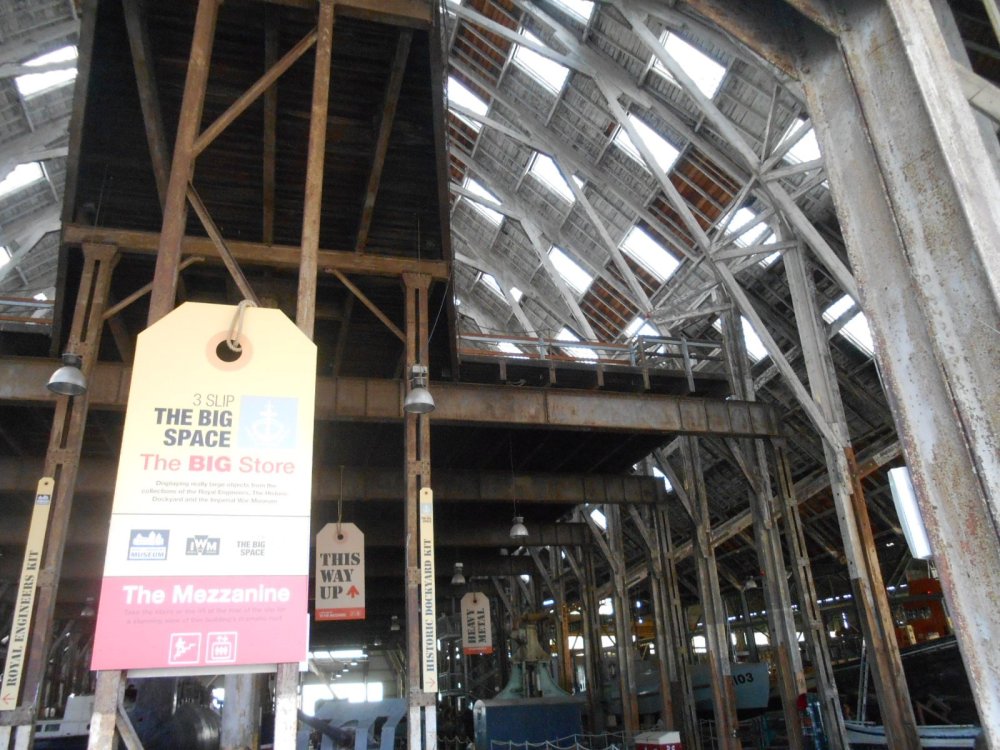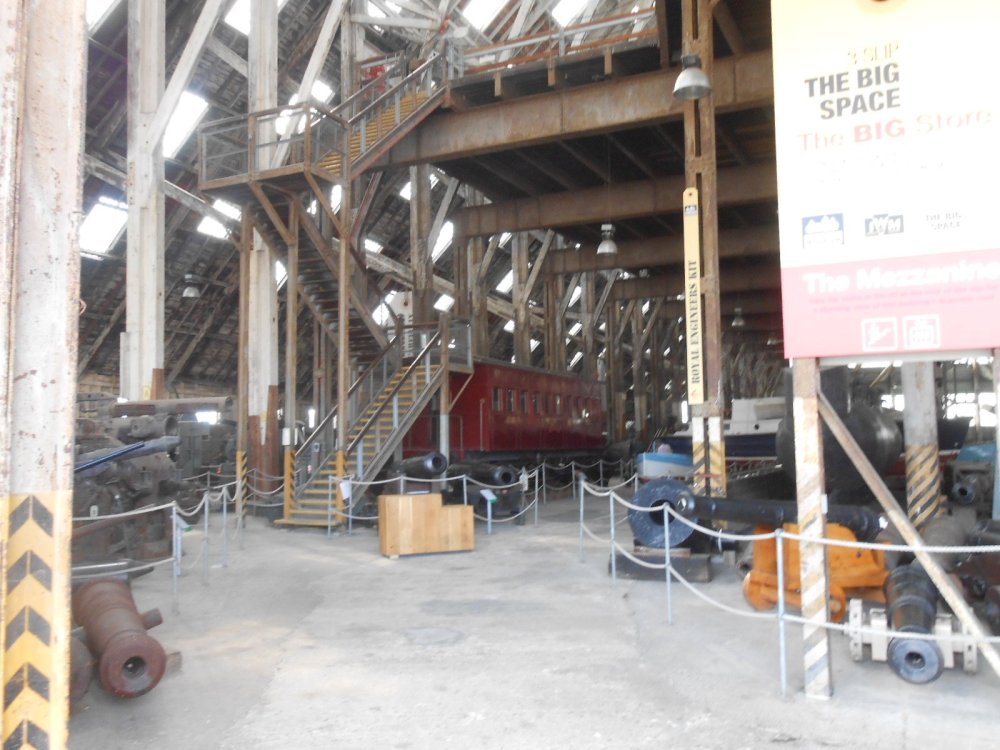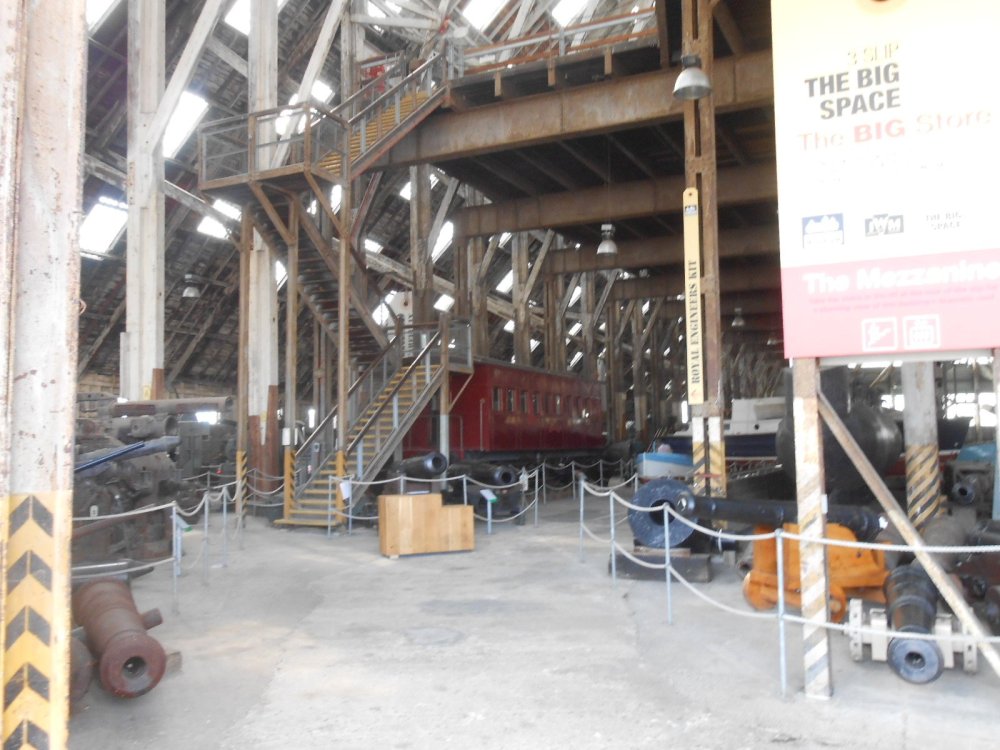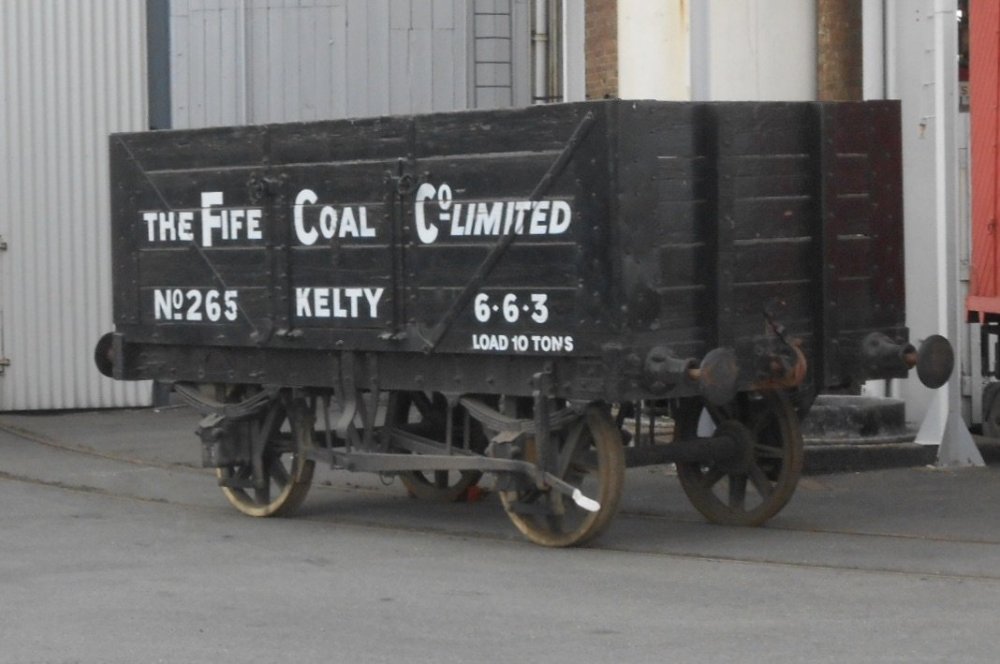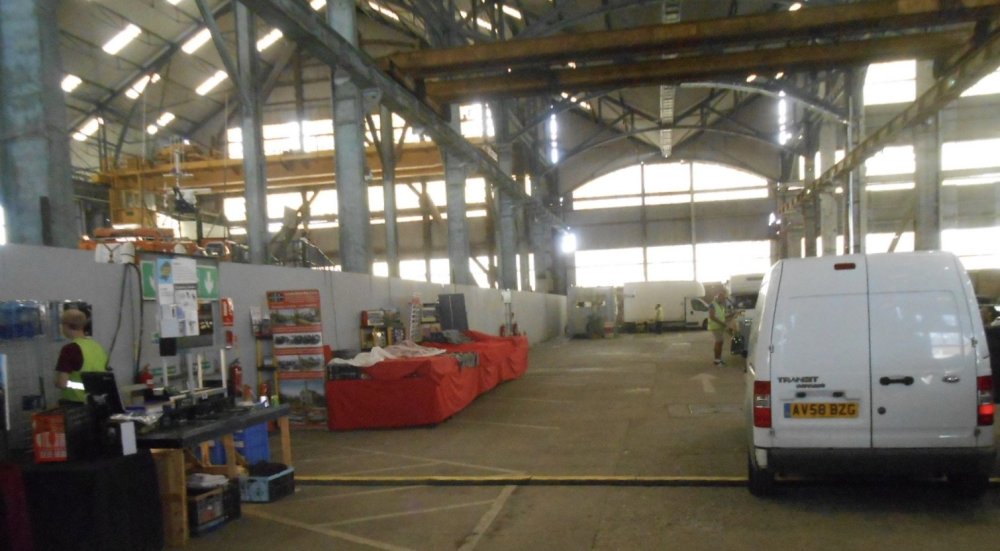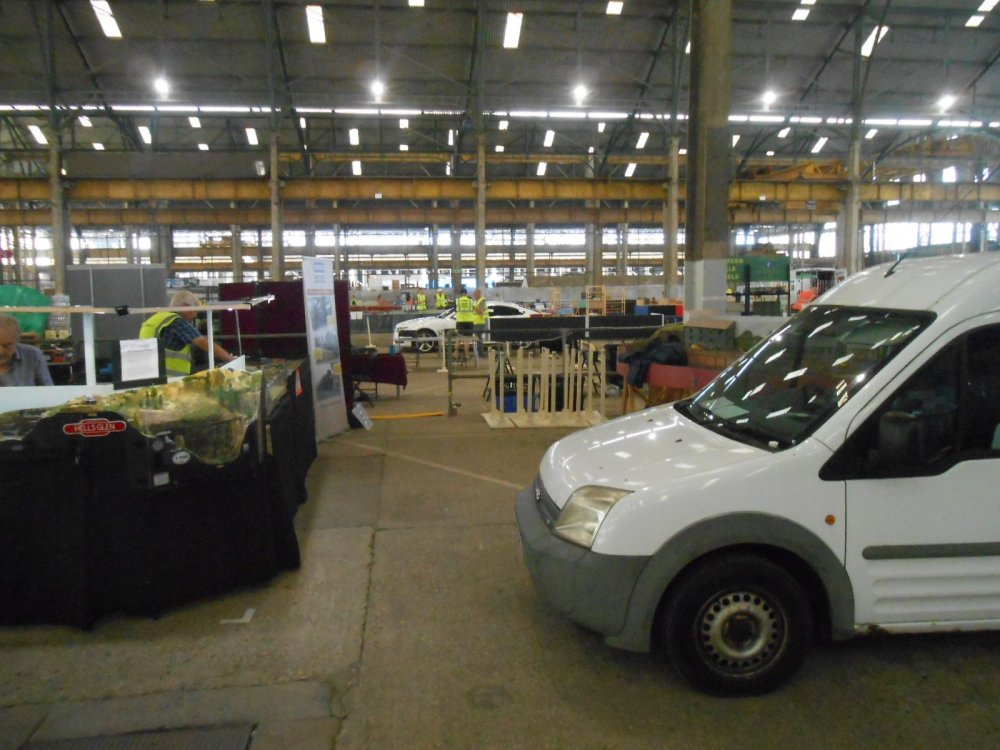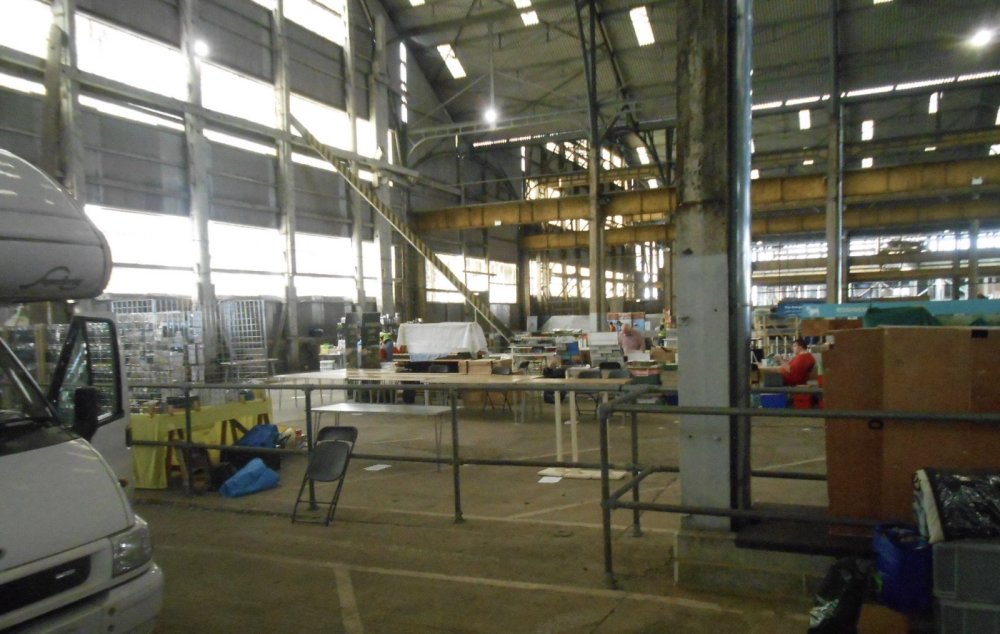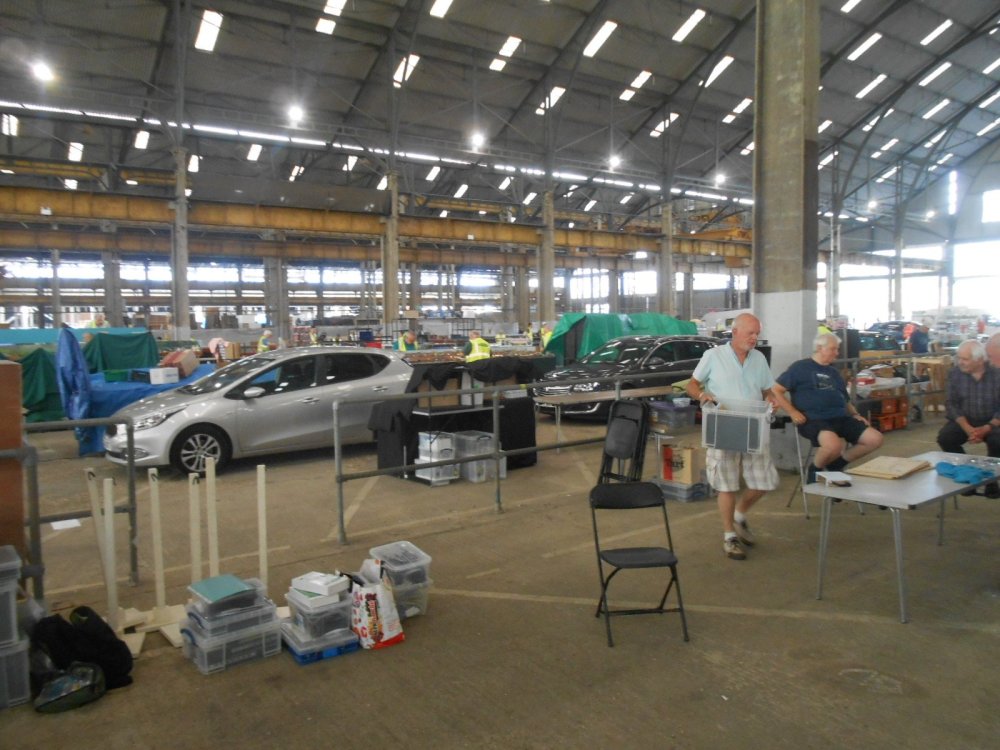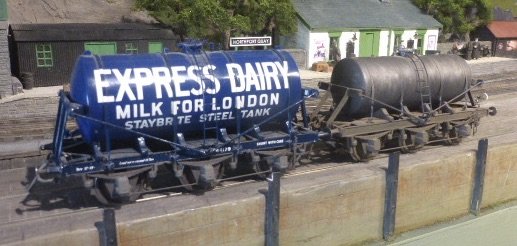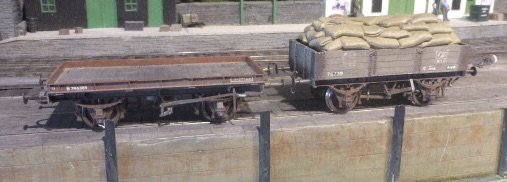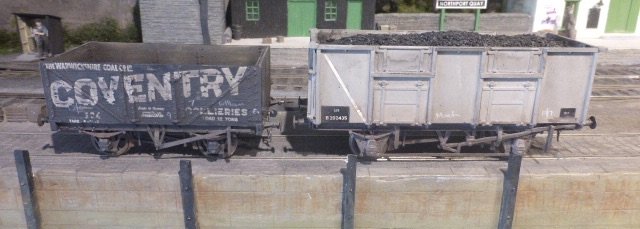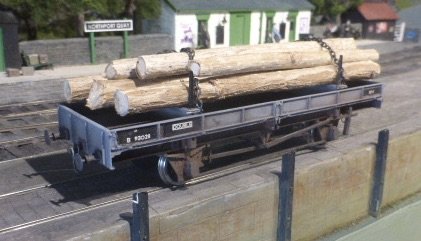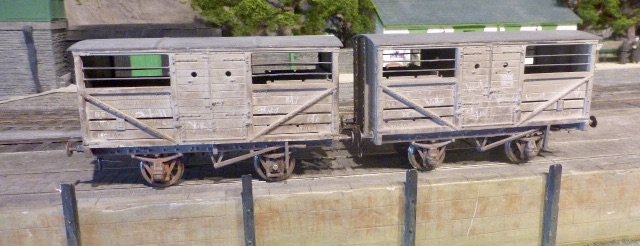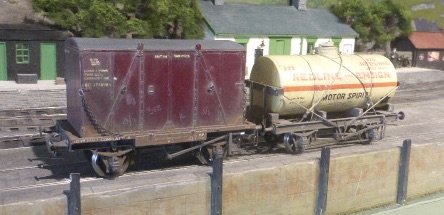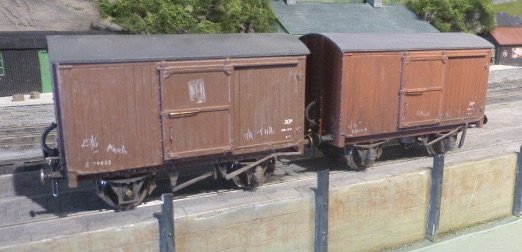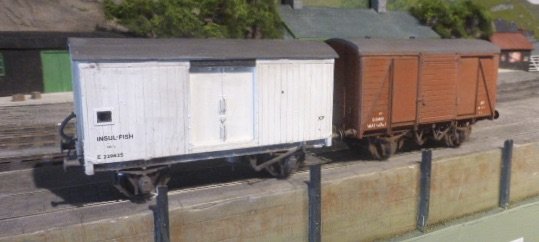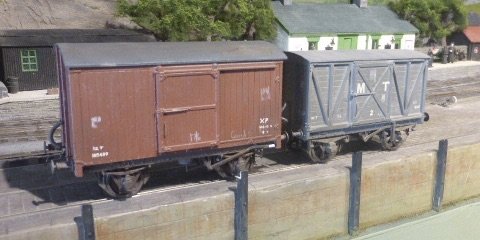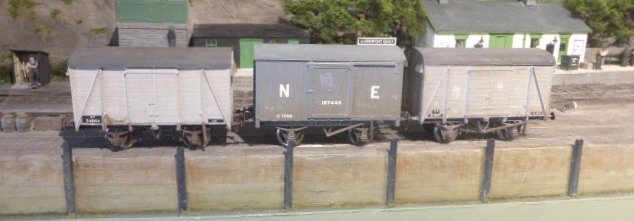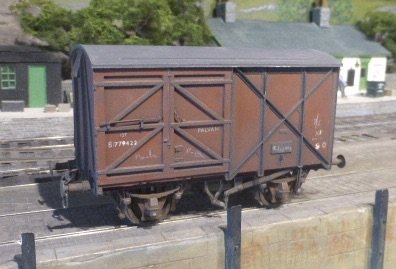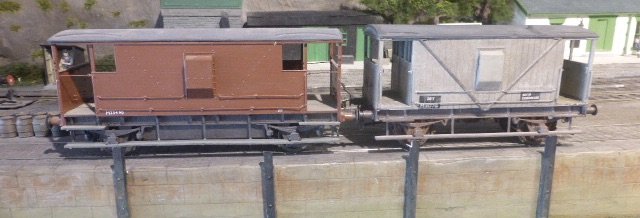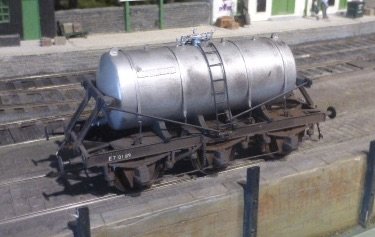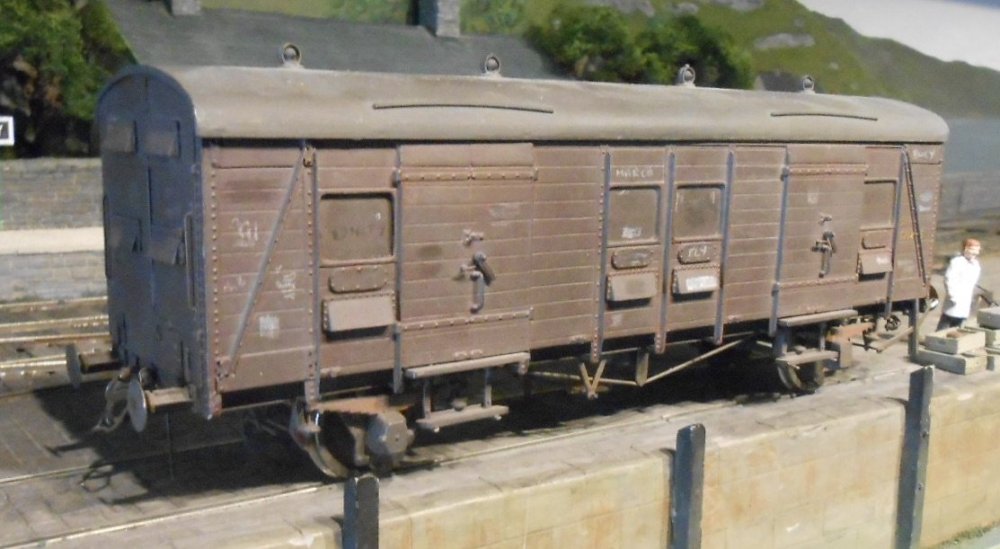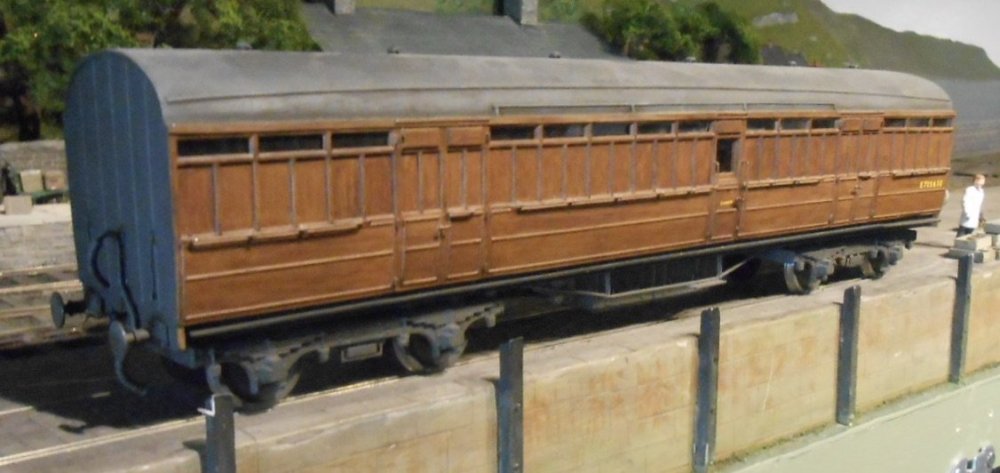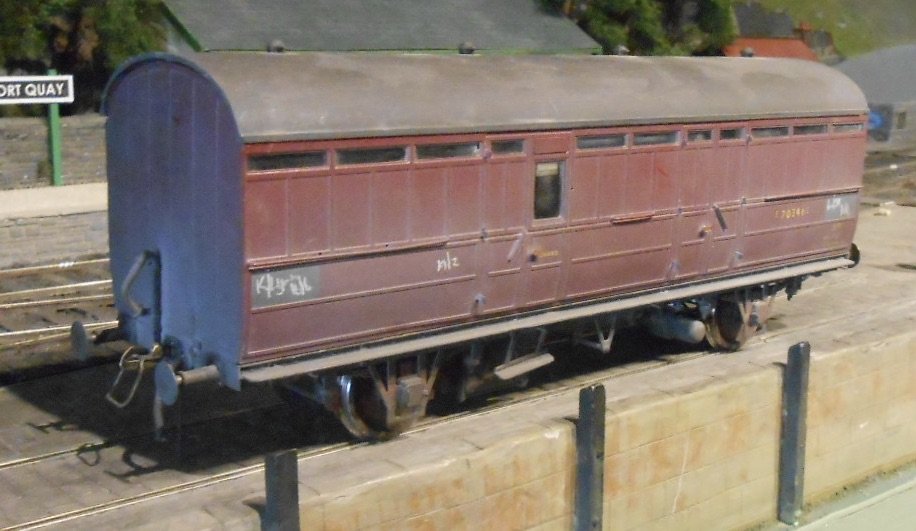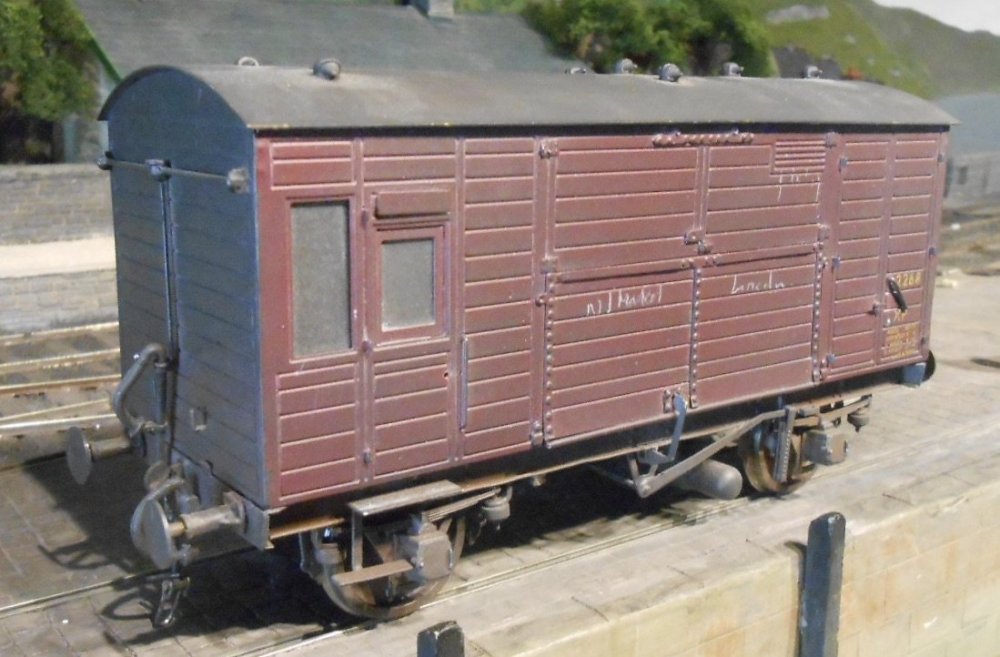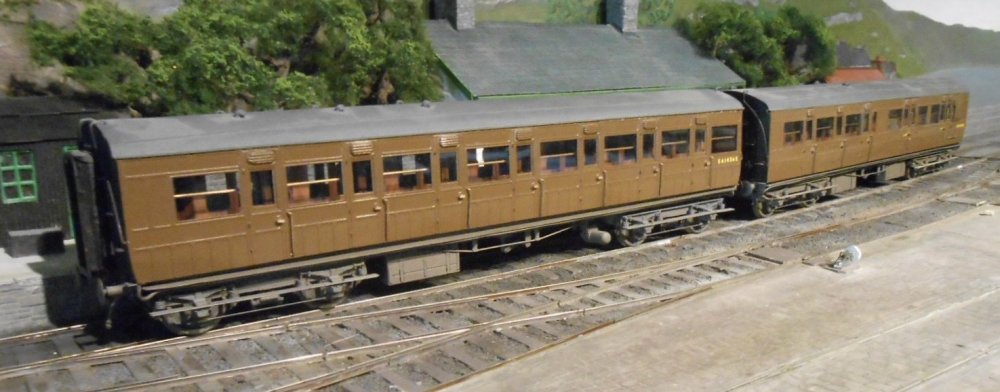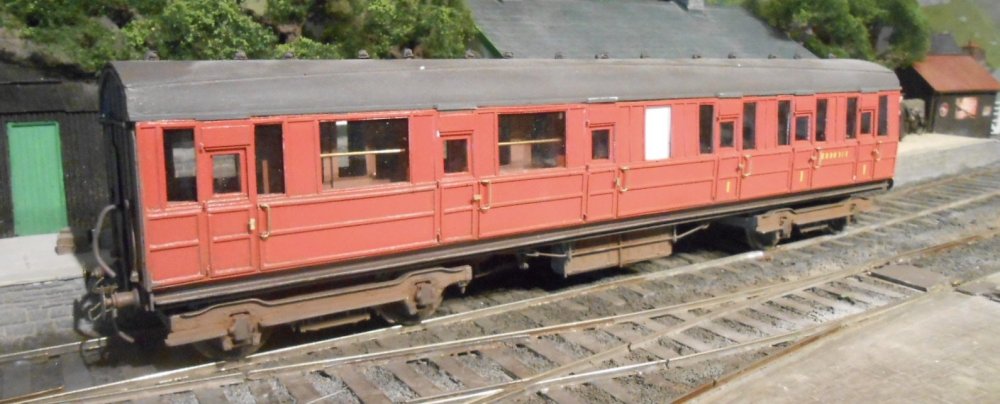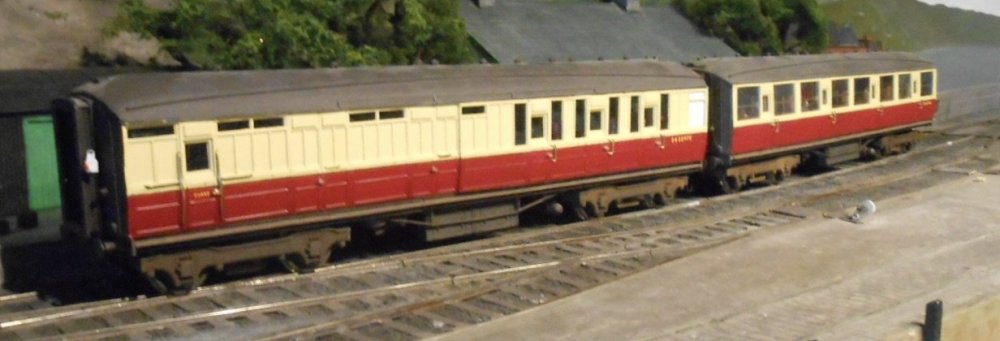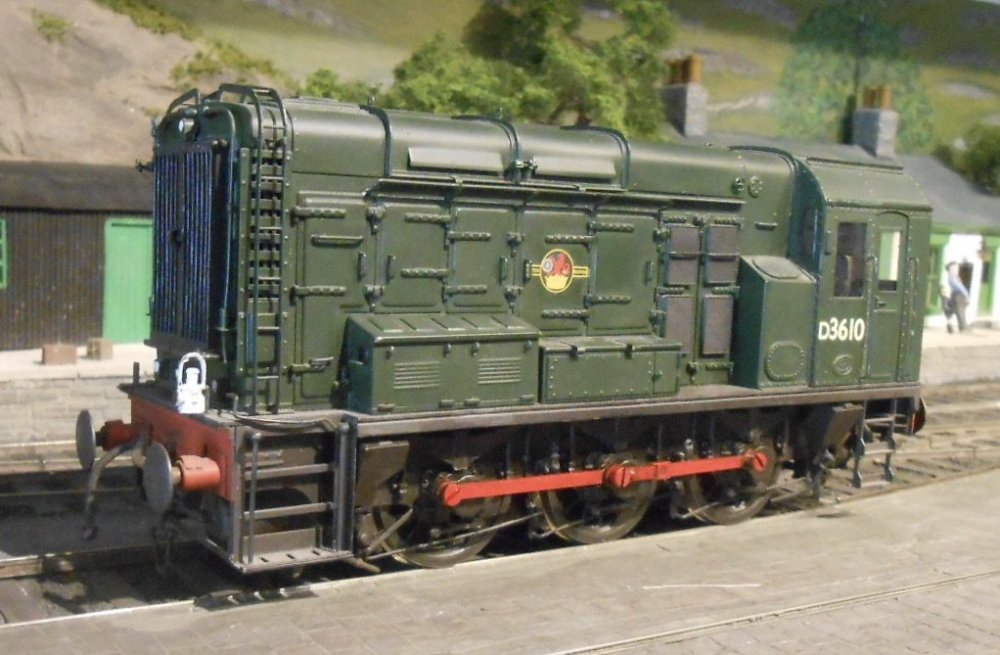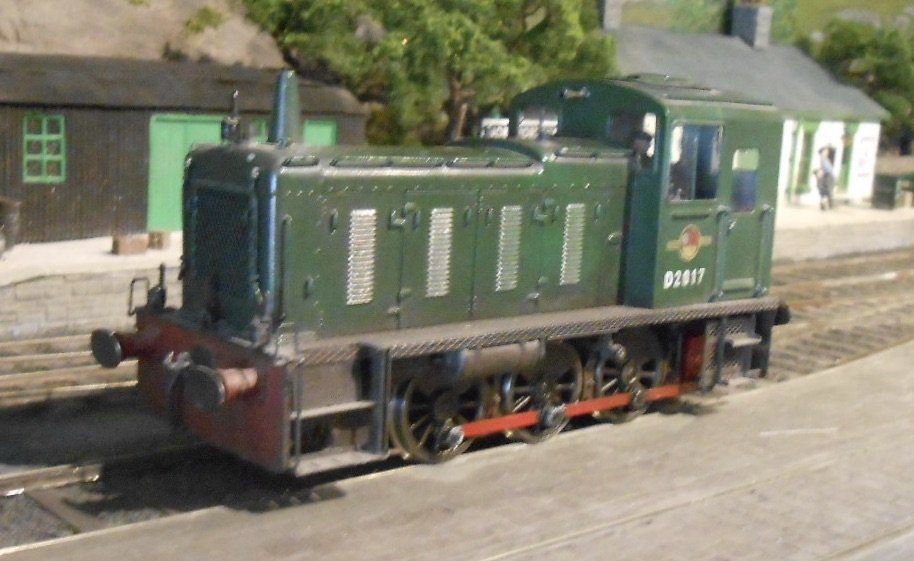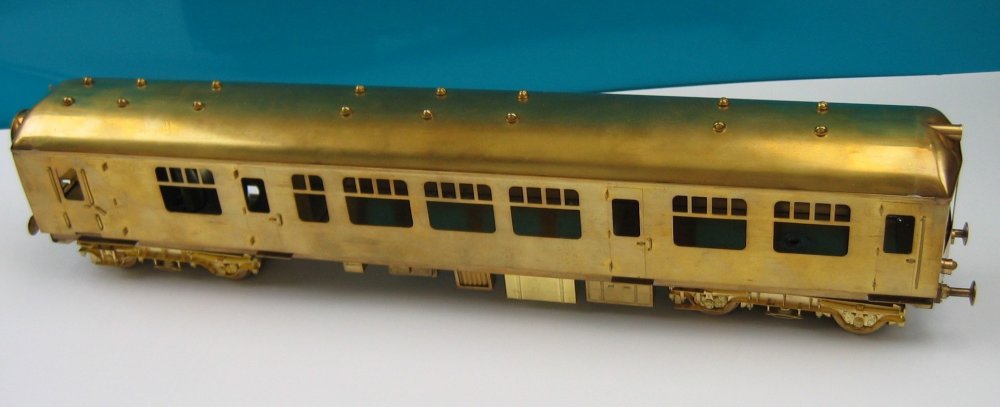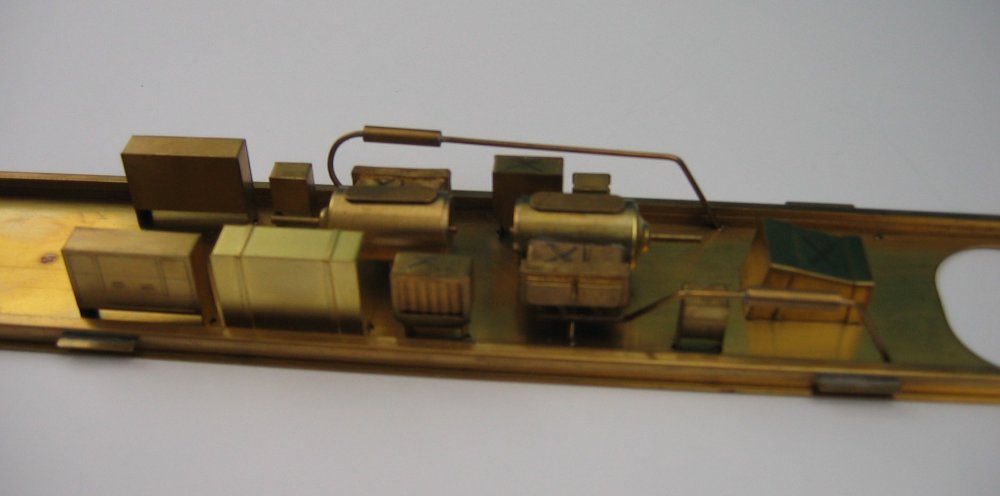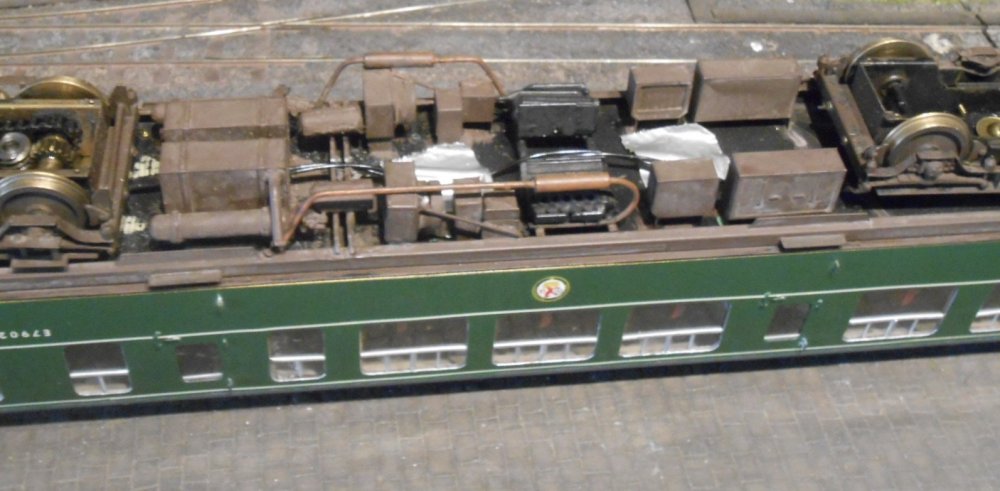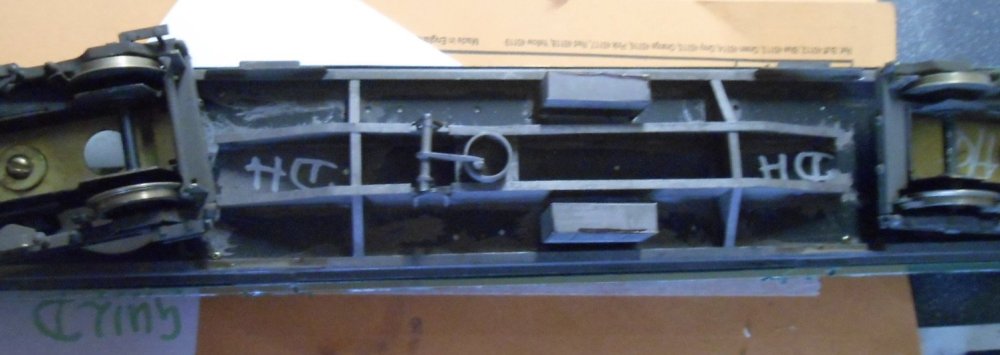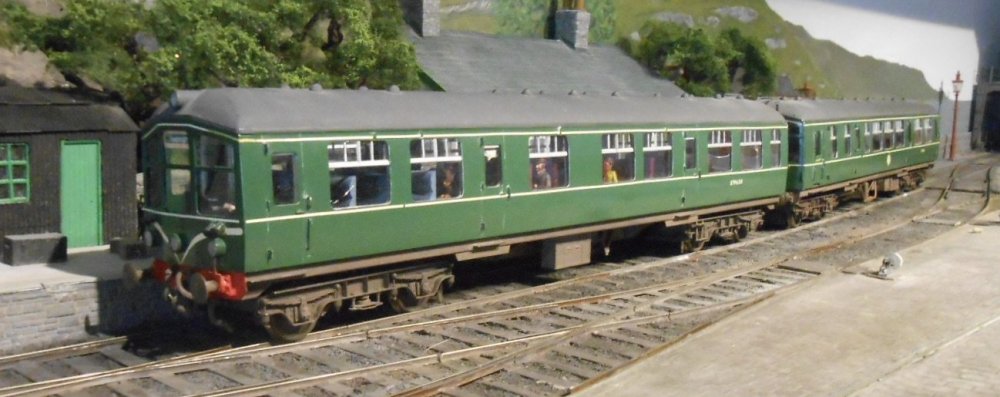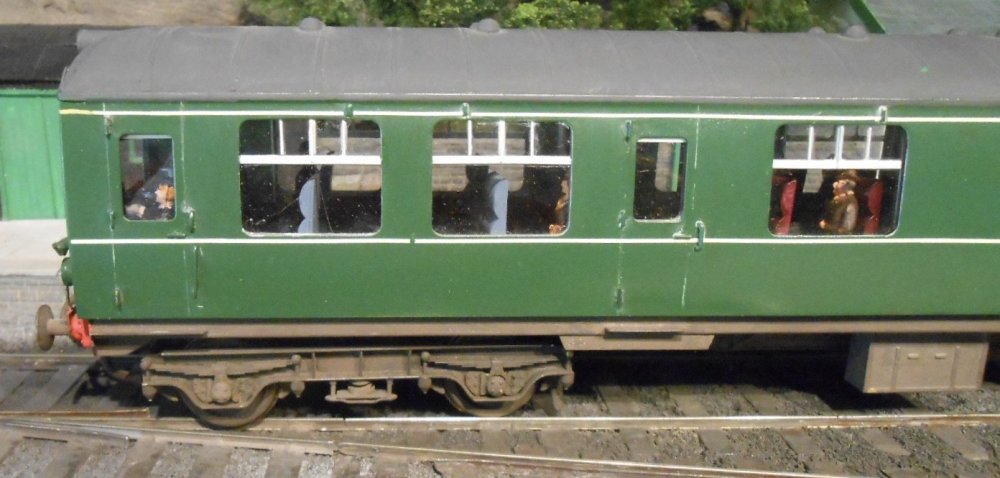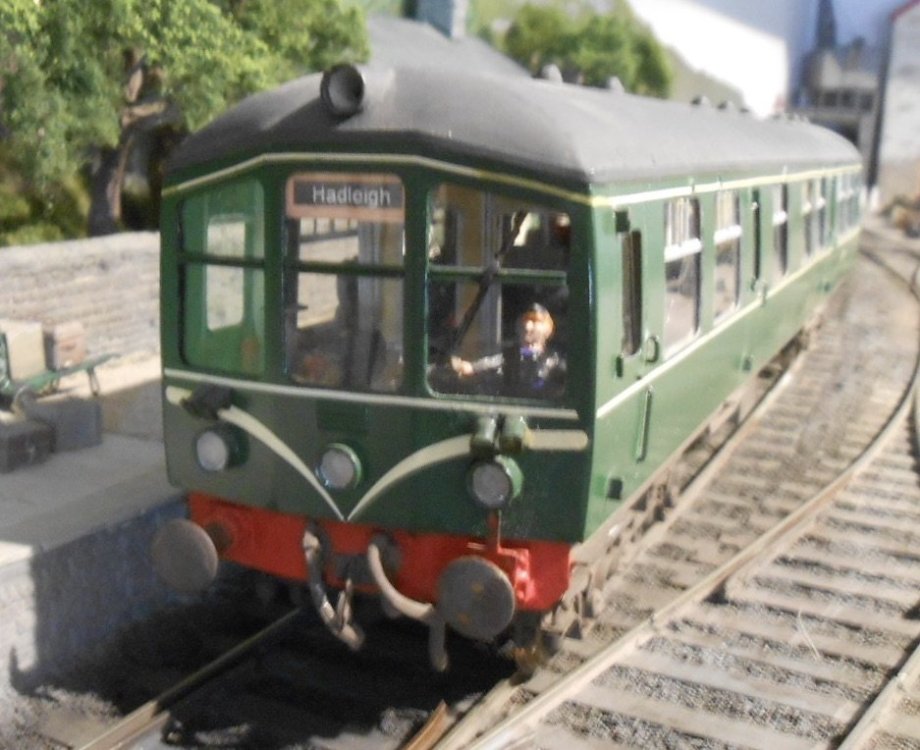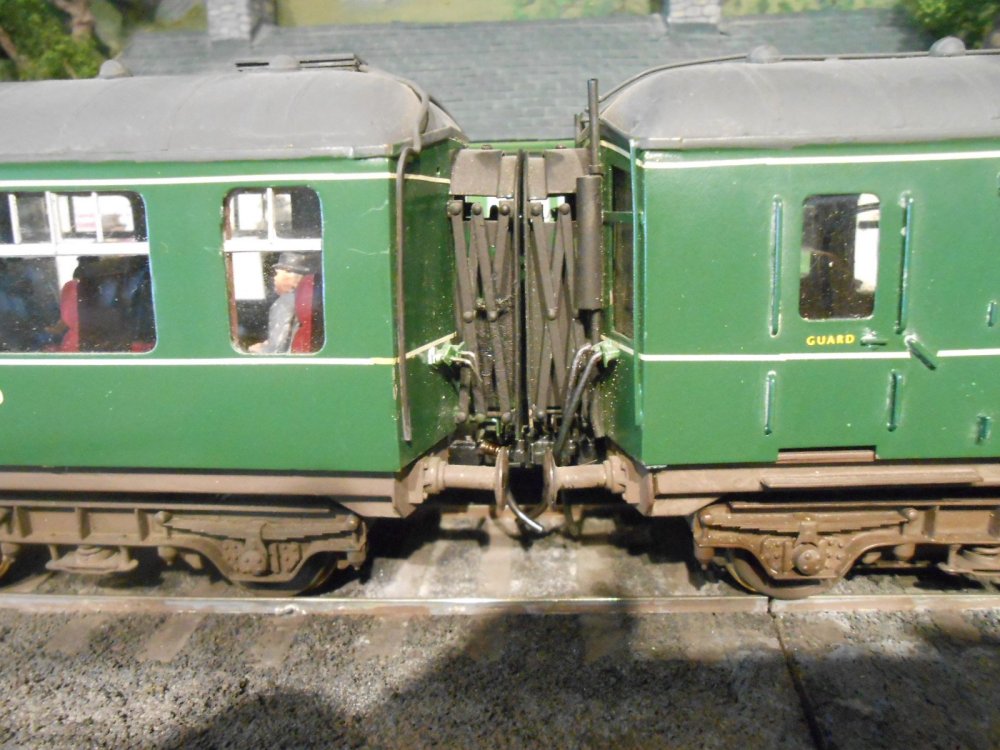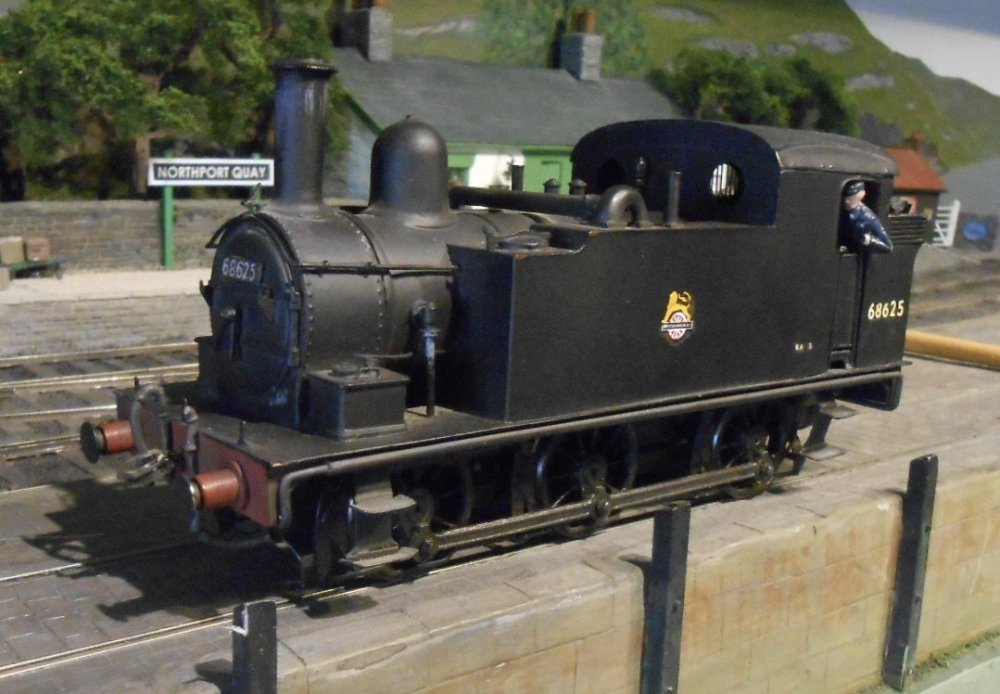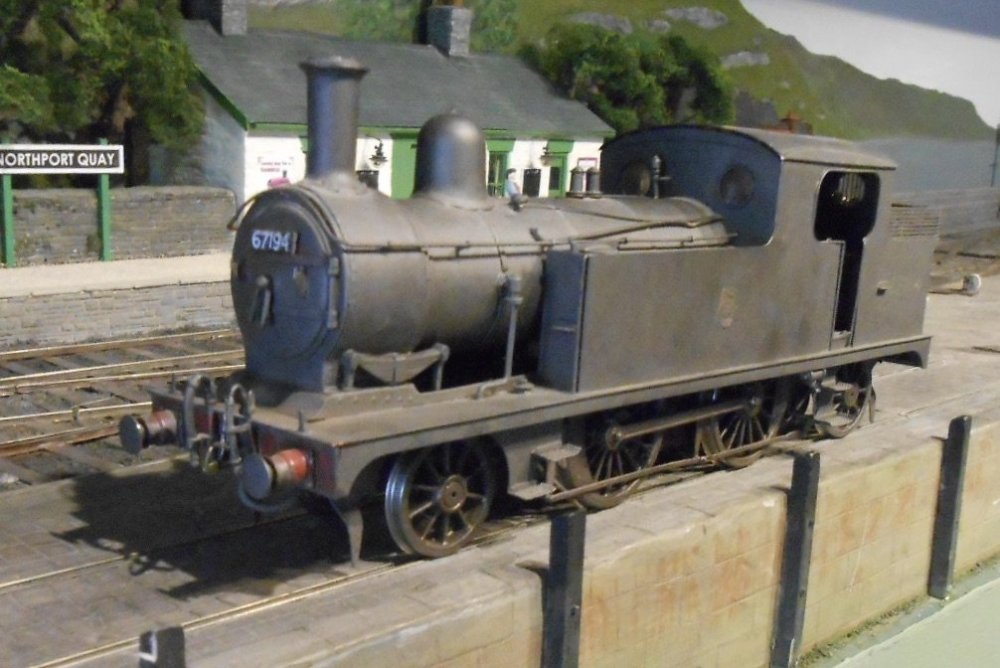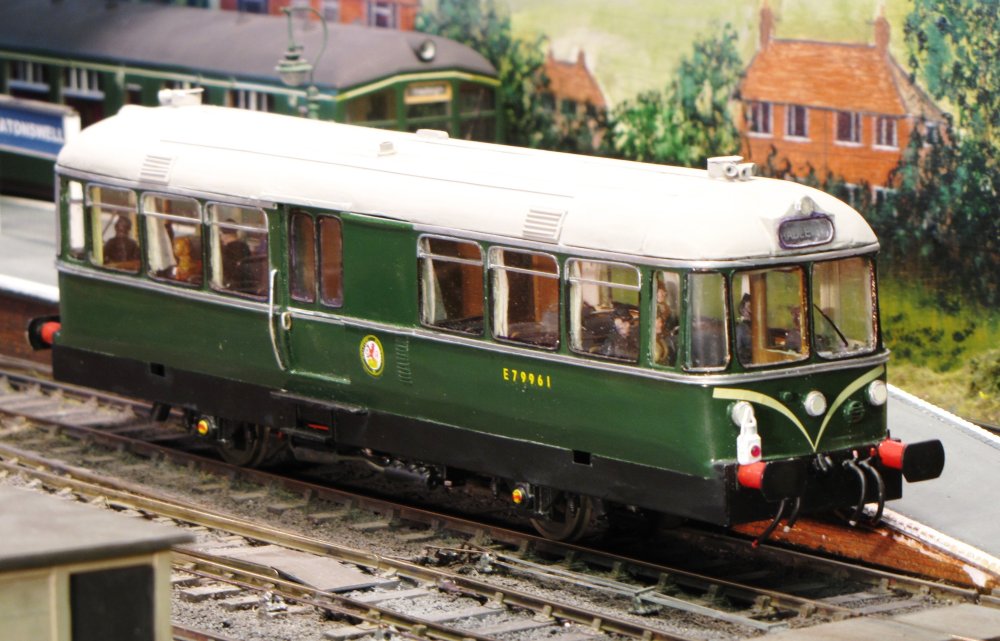
David Holman
Members-
Posts
4,168 -
Joined
-
Last visited
-
Days Won
114
David Holman last won the day on June 21
David Holman had the most liked content!
About David Holman
- Birthday June 18
Personal Information
-
Location
SE England
Converted
-
Biography
Former primary headteacher.
Active modeller for 30 years, last 20+ in 0 Gauge [Guild Member]. Several articles in Railway Modeller around layouts Hawkhurst & Cranbrook town [both 0n16.5], and Loose End and Eatonswell [standard gauge], plus one in Model Railway Journal on Wantage well tank.
Long term interest in Irish Railways, for reasons can't explain, other than their obvious charm. Now working on 36.75mm, 7mm scale model of a Sligo, Leitrim & northern Counties railway proposed branch line
Converted
-
Interests
Model Railways, bird watching, walking, most sports.
Converted
-
Occupation
Retired primary headteacher and schools advisor
Recent Profile Visitors
The recent visitors block is disabled and is not being shown to other users.
David Holman's Achievements
-
Thought I'd give an overview of our Exhibition, now back in the Historic Dockyard for a second year. The Chatham & District Model Railway Club has had premises here since about 1990, though it goes back to just after WW2. The Historic Dockyard Museum celebrates the history of the Dockyard, which includes, among other things, the building of sailing ships going back to Tudor times, not least HMS Victory, Nelson's flagship at Trafalger. More recently, iron and steel ships were built, including submarines. The site is huge, with many important buildings, which now house other national collections. Our Show takes place in the Number 5 Covered Slip, once used for shio building. but now a vast, barn like structure. A similar slip next door houses a lifeboat exhibition. Opposite is what is known as the 'pea shingle', a large square, where we once held a show in a marquee. The was the year Adavoyle visited & was lucky to escape when the roof leaked! Note the range of historic buildings in the background. Next come three open docks. The first holds HMS Gannet, a Victorian 'iron clad', while the second is home to HMS Ocelot, a post WW2 attack submarine. Finally comes the destroyer HMS Gannet, built at the end of WW2 and, at the time, one of the fastest ships in the Fleet. All three are open to visitors. More fine buildings lead you past the helipad, next to which is a loco shed. Inside the loco shed at the moment are an early diesel shunter and Marcia, which is owned by Andrew Hardy, proprietor of Rapido Models. Marcia has only recently moved here, but is used regularly, including this weekend, offering 'Driver for a Tenner' runs. All proceeds go to the Dockyard. The almost rural scene below is where a number of preserved wagons are stored, along with a couple of working steam steam cranes too. After that comes Anchor Wharf and the Ropery, a run of Georgian buildings over 500 metres long. The Ropery still makes specialist ropes, while the space between the two buildings is regularly used for filming scenes for the 'Call the Midwife' TV series. Indeed many feature films have had sequences shot here. The Model club has premises in a 16 metre square cellar here too. Among other buildings is the old fire station, while the tramway tracks wander all over the site, some of which are still in use for public displays. Indeed, some of our club members are qualified steam and diesel loco drivers for the Dockyard. Heading back to the exhibition hall, we pass the original No1 Covered Slip - a fabulous timber framed building, home to a mezzanine exhibition space and an eclectic collection of dockyard stuff below. Back outside our exhibition hall is this Fife Coal wagon, which the club are helping to sponsor its repairs. 4mm scale models have been commissioned are are on sale at the show. Inside the hall here are are a few pictures showing exhibitors setting up this afternoon. Layouts include James Street [N gauge in this month's Modeller] and a 20 metre long Gauge 3 [1:22]. Around 40 layouts in all and a total of over 100 stands. Entry to the show gets you a half price ticket to the rest of the Dockyard and if you can't make it this year, plans are already well advanced for 2026. Will post more pictures from the show itself tomorrow and Sunday.
- 1 reply
-
- 3
-

-
Good on you Patrick. Feel sure you will enjoy working in 7mm scale and 0n16.5 is a great way of doing it because the track is indeed easy to work with, while your obvious talents with buildings and scenery should likewise embrace the larger scale. Very addictive though - but I would say that!
-
Great project and a worthy accompaniment to a Queen.
-
Beagnach end: A Branchline terminus.
David Holman replied to Metrovik's topic in Irish Model Layouts
Small as you like! Nice excuse for a bit of creativity to show off (and enhance) a favourite model. -
British and Irish on top in Tour de France!!!!
David Holman replied to leslie10646's topic in General Chat
And the Lions play the first test in Australia on Saturday. Always good to play the Aussies. Even better if we can beat them. -
Freight Stock Pretty much everything is either from kits by Slater's or Parkside. Apart from paint, both types come complete, including transfers and and generally easy to build, even for a beginner. I was very much making them when Martin Welch was sharing his weathering techniques in Model Railway Journal. His seminal 'Art of Weathering' appeared at the same time & even nearly 30 years later, remains my go to book on the subject. First up, a mix of open wagons that formed the basis of an unfitted goods train. My J15 was used for this, as I deliberately made it a steam brake only loco, meaning the buffer beams were completely uncluttered with hoses and just had three link couplings - ideal for working by the Great Hand From The Sky. A method I still like, by the way, but it is not ideal when operating from the front at exhibitions. No 1950s layout is complete without a few steel minerals. Very much followed Martyn Welch's teachings for these. You paint the rust colour on first, then [when dry] cover it with Maskol. Once this has gone off, paint the top coat [wagon grey]. When this is dry, take a fine pair of tweezers and pick off the Maskol, hence leaving the rusty patches underneath the top coat, often with some nice peeling edges too. Now some specialist vehicles in the form of cattle wagons, a container flat and a petrol tank. More about the tanker later. I built a fair selection of vans over the years. The unfitted ones usually went with the J15 and pick up goods, while the fitted vans made a train of their own. That said, the fish and meat vans above, usually got included in the 'stock train' mentioned in the previous post. There are three brake vans, essentially LNER based, though the one above also became a BR Standard. Finally, the milk tankers. Three Slater's six wheelers, these are certainly not for a beginner or the faint hearted. Probably one of the most complex wagon kits available. Part of the reason for this is that everything in the under frame is on show, plus there are lots of fine details. These are real mixed media kits involving plastic mouldings, etched brass, lost wax brass castings, wire and other fittings. The build is further complicated by the way the tank is arranged. You'd think it would be a tube with cast/moulded ends, but no - the tank comes in three sections, split 120 degrees longitudinally. There's some lovely fine moulding, but when sanding those joins flush, you have to be really careful not to scrub it off. I think there is about 50 hours work to finish one of these tanks, which makes the recent ready to run versions an absolute bargain. Hopefully, I'll be able to post pictures of this stuff, in action on the Club layout after this week's Chatham Show. Thursday is moving day - breaking the layout down and transferring it all to the the venue in the No5 Covered Slip. Friday will be getting everything running, with last minute fettling, while on Sunday evening it all has to go back to our Clubroom in a cellar under the Ropery. Wish us luck!
-
Very dainty and full of those all important details, whatever they are! Signal boxes are a bit like coaches - should be just a simple glazed box, but there is a lot more to them than that.
-
Parcels Stock I've always had a thing for parcels stock - it is probably down to the variety that could be seen in a single train, so I built up a decent sized rake, along with the option of adding a parcels van to a short passenger train, which I also like. First up is a Southern Railway GUV. These seemed to turn up all over the country for parcels and newspaper traffic. Mine is the Slater's kit & very nice it was too to build. Next we have an LMS bogie GUV. Another nice vehicle with its short bogie wheel base. Unlike the Slater's kit [mostly plastic], this one, from Wagon & Carriage Works is mostly etched brass and white metal castings, so it rather heavy. The LNER full brake is much lighter, being an Ian Kirk plastic kit. Fairly basic [and therefore requiring a bit more work to be presentable], these kits were nevertheless very cheap and good value. Getting the roofs to sit properly could be a pain though. The LNER pigeon van was either D&S or W&C again, hence mainly etched brass and white metal. Back in the day, racing pigeon traffic could be quite substantial. Below that is an LNER horse box, from one or the other of those stables [pun intended]. So, a nice mix of shapes, sizes and roof lines, which when added to vehicles like fitted vans, milk tanks and the like, makes a classic Eastern Region 'Stock Train', which I'm hoping to run next weekend at the Chatham Show, behind either my B17 or D16. Coaches Quite an eclectic mix, mainly because passengers trains on Eatonswell only ran to three coaches, or two and a parcels van. First up is a pair of ex Great Eastern corridors. They were D&S kits bought not just because I liked them, but also because MRJ ran a couple of articles on how to build and detail them. On Eatonswell, they usually ran with the SR GUV behind my E4 2-4-0. A trio of Gresley 'short' bogies next. The composite was scratch built in plastic card and strip on Wayoh bogies, while the pair in 'blood & custard' are Kirk kits. The B17 used to work these - a bit of a down turn from previous express duties, but it was often the case of them being relegated to local trains once the B1s and Britannias arrived on the scene Finally, a couple of Thompson suburbans. The brake 3rd is scratch built [Wayoh bogies again], while the composite is another W&C kit. They often ran with a horse box, hauled by the F5 2-4-2T.
-
Fabulous. Well done Paul. For me, there has always been something special about S scale, be it the imperial nature of it all to that almost ideal intermediate size between 0 and 00. Teamwork looks great and I've always loved the idea of the 63/64th" track gauge.
-
Ready to Run? Well, sort of: several items were bought when I was made redundant from Kent Education in 2011, though it must be said I was back at work the next day, but this time as a consultant. Such are the ways things still work around here, years later! First up were a couple of diesel shunters from Bachmann Brassworks. Nice models, but they came unpainted and the 08 in particular only had basic detail. It certainly ran well straight out of the box, but [I think] Modern Traction Kits did a detailing pack. Opening the latter, you were met with the words 'commiserations on buying the 08'. Well it didn't look that bad to me! Turns out the shape of the body is wrong - it should taper towards the top, but instead is very square. Nevertheless, the details were very comprehensive, with many tiny parts, often etched in stainless steel, so I set about adding as many as possible, though a couple got vaporised when I had my resistance soldering unit on too high a setting... A full paint job was required too, plus transfers from Fox. The 03 was pretty good straight out of the box, including some nice cab detailing, but like the 08 was in unfinished brass. Nowadays you can get both shunters for much less, ready to run. The 08 starts at under £200, I believe, but hey, these are both mine and I had a pleasant time working on them. The next purchase was much more of a problem child. Another Bachmann Brassworks, this time a Derby Lightweight two car DMU. On the face of it, another nice model, but the more you looked, the more you realised was missing, or even just wrong. Not good for £400 - and remember this was 14 years ago. First of all, there was no interior at all, while the more I looked at the windows, the more I really didn't like the very plain toplights. The under frames were very curious, The original units had two power cars, as they were intended for West Yorkshire, but those that worked in East Anglia had only one power car, due to the easier gradients. However, it was what was put underneath on the model which was really just odd. Lots of battery boxes [mostly in the wrong place] and what look like two electric motor casings, as opposed to diesel engine blocks. So, everything was stripped off and after a visit to the North Norfolk Railway to check out their preserved example, I set about trying to improve things. The picture below shows what was achieved by re-arranging the etched boxes and adding one or two castings, including a couple of large engine blocks. The non motor coach under frame was a much simpler affair, just needing some sturdy trussing made from plastic sheet, plus a brake cylinder and a couple of battery boxes. That just left the body work. After making up a full interior [lots of seats and a few passengers] for each coach, I then decided to cut out the toplights and make new ones from plastic strip. No small task given all those windows, while I also had to add glazing bars to the cab front windows. The original Derby units didn't have them, but it was soon found they were needed as the large expanses of glass developed a tendency to crack due to vibrations. A complete paint job was required too of course, plus the transfers, with the 'speed whiskers' in particular really bringing the model to life. Despite the faults, overall, it was a nice model, with some neat details, not least the corridor connections. You might just see I enhanced these with jumper cables which can be easily connected once the model is on the track. I calculated that the model needed over 400 separate pieces added [many of these for the windows], but I think it has been worth it, not least because, like many, I have fond memories of grabbing one of the seats behind the driver's cab to see the road ahead. Indeed, I once had a cab ride to Bleanau Ffestiniog in one. Like all the models pictured the DMU is sitting on Northport Quay and it is interesting to see how two 63' coach units dwarf the station. The final two models in this post were bought ready made from a fellow club member, Both are Connoisseur kits [always very good], but were painted in LNER livery, so I redid them in BR black, followed by some weathering, especially the F5 2-4-2T. The 0-6-0T is one of the J69 'Buckjumpers' So ready to run maybe, but definitely not straight out of the box.
-
And it is 1/64, S scale, remember...
-
Safe to say we all liked the first version, Alan... Interesting to compare the two pictures. Is the roof slates material slightly thicker this time? The slates seem a little more defined. Likewise the ridge, while painting the downpipes a lighter colour makes them stand out less. Either way, enlarging the photo to study all this shows more detail and it is just sublime! The lichen on those coping stones is wonderful and the building oozes life.
-
Pride of the line was undoubtedly B17/6 4-6-0 Nottingham Forest. Was born there, so have always followed the club, while 61666 was a regular visitor to East Anglia. The model is an etched brass kit and by some margin the largest loco I've built. Quite a complex job, with its outside valve gear and fully lined BR Brunswick Green, it is been a showcase model for the last ten years, but am tempted to run it at Chatham later this month The other mainline passenger loco was this D16/3 4-4-0. After the Wantage Tank, this was my first big scratch build and for some reason I chose one with the decorative splasher valences, just to make it even more difficult.. The big goods engine is a J17 0-6-0. Another etched brass kit, its long coupled wheelbase has meant it grunts a bit going through 6' radius points, but I've always liked the design. The Waggon & Maschinbau four wheel railbuses were used a lot in East Anglia, so decided I'd try and scratch build one. All those complex curves made it quite a challenge and then [Sodd's Law of course], a rtr one came out soon after. Still - its mine and no one else's! Forgot to mention that the layout used DCC control. No sound [way too expensive], indeed got away with one amp chips designed for 00, but as none of my locos drew more than 0.25 amps things were [mostly] fine. However, blew several of them because didn't insulate them properly in etched brass bodies - still better £15 quid than over a hundred... It was the Bachman Prodigy system, which I still have...
- 16 replies
-
- 10
-

-

-
Back from a week in near 40c Umbria, Italy. Lovely area, but no sun tan as spent all our time in the shade. Anyway, now for Eatonswell Mark 3. After the initial oval and then the end to end with cassette fiddle yards, it was obvious that the format was impractical, not least because baseboards 4' long and 2'6 wide were desperately unwieldy. So, buildings were removed, track lifted and baseboards scrapped. The new layout was terminus-fiddle yard: four 3' 9 x 2' scenic boards and a 5' fiddle yard. There was a small additional scenic board which took the station building, at right angles across the end of the track. The fiddle yard still used cassettes, but this time I employed separate loco and train cassettes. The former could easily be picked up and moved to the other end of the train, while the latter only needed sliding back and forth. The 5' overall length meant there was enough room for a tender loco and three 52' bogies coaches. So, here we see the original station, at right angles to the tracks, creating a nice terminus. Looking the other way, you can see there was a single main platform, with a bay just beyond, while in the foreground is a double loading dock. Moving further along, we see the goods shed siding and the rest of the bay platform. This was mainly used for my Derby Lightweight DMU and W&M Railbus. Further pictures of these below. The final section of the layout had a run of maltings, severed by their own siding, while at the front edge was the loco shed, based on the one at Saffron Walden. After the trials of the Mark 1 & 2 layouts, this version proved eminently more manageable - five and a bit baseboards [all with integral legs] against sixteen, while also being capable of solo operation, though two or three people were better. With point and signal operation all being wire in tube, wiring was fairly simple. It only did five shows, but was certainly one of my better efforts until the Irish bug bit in 2012 and Eatonswell was sold - though I did keep the stock. More on the latter next time.
-
Always though Courtmacsherry was a near perfect branch terminus. Loco shed or school to hide the fiddle yard, estuary in front, row of houses behind. Andy Cundick has done a very fine model of it, to scale in 4mm, but you could compress it down to much less. Even in 7mm, the essentials will easily fit into 3m or so. When we visited a few years ago, there was a race meeting on the 'strand'. An oval course had been marked out, with all the horses and jockeys gathered on the sea front above. A good crowd was there for the action, with the bars doing a roaring trade. Lots of music too. Magical!
.png.c363cdf5c3fb7955cd92a55eb6dbbae0.png)

